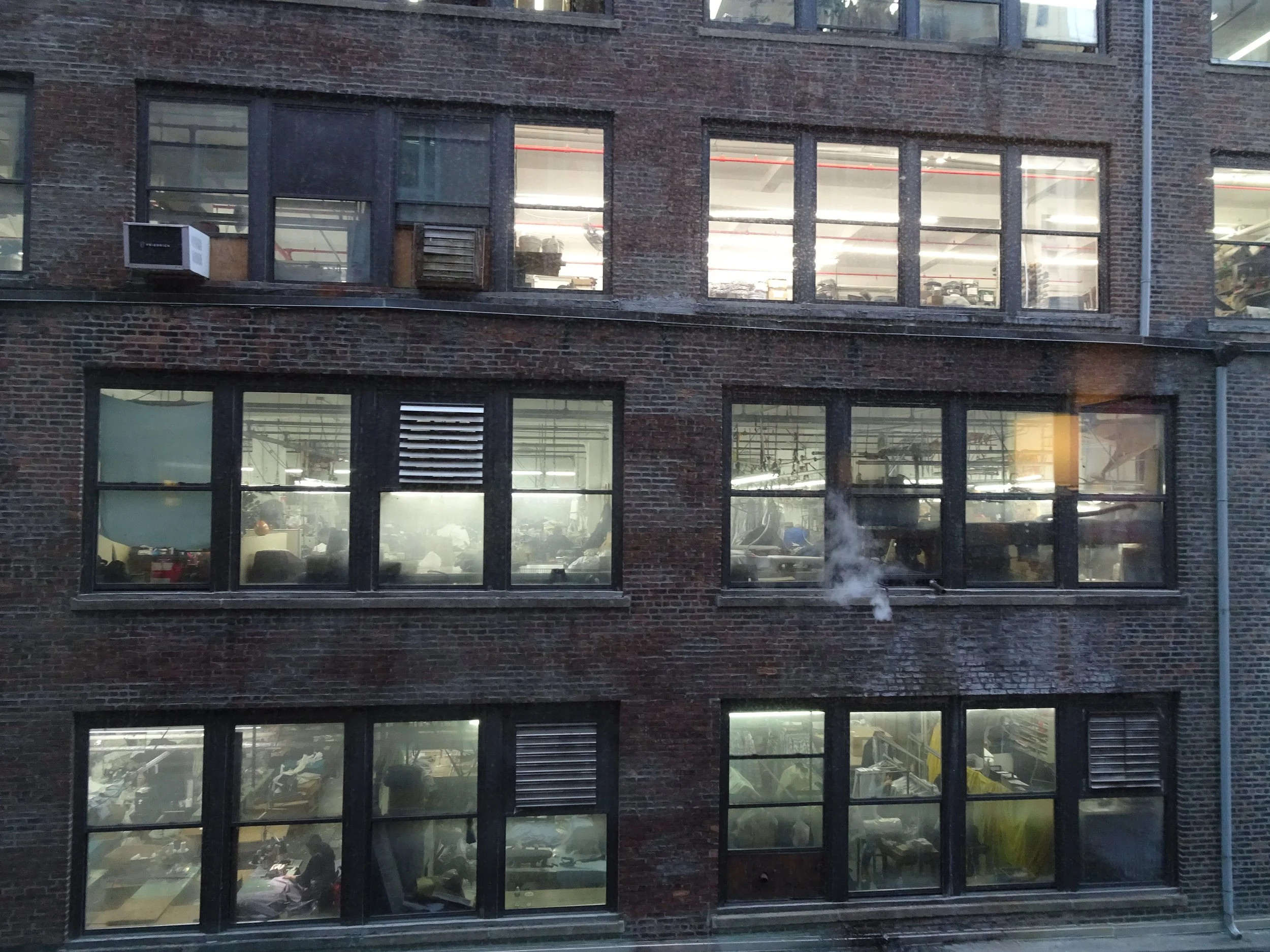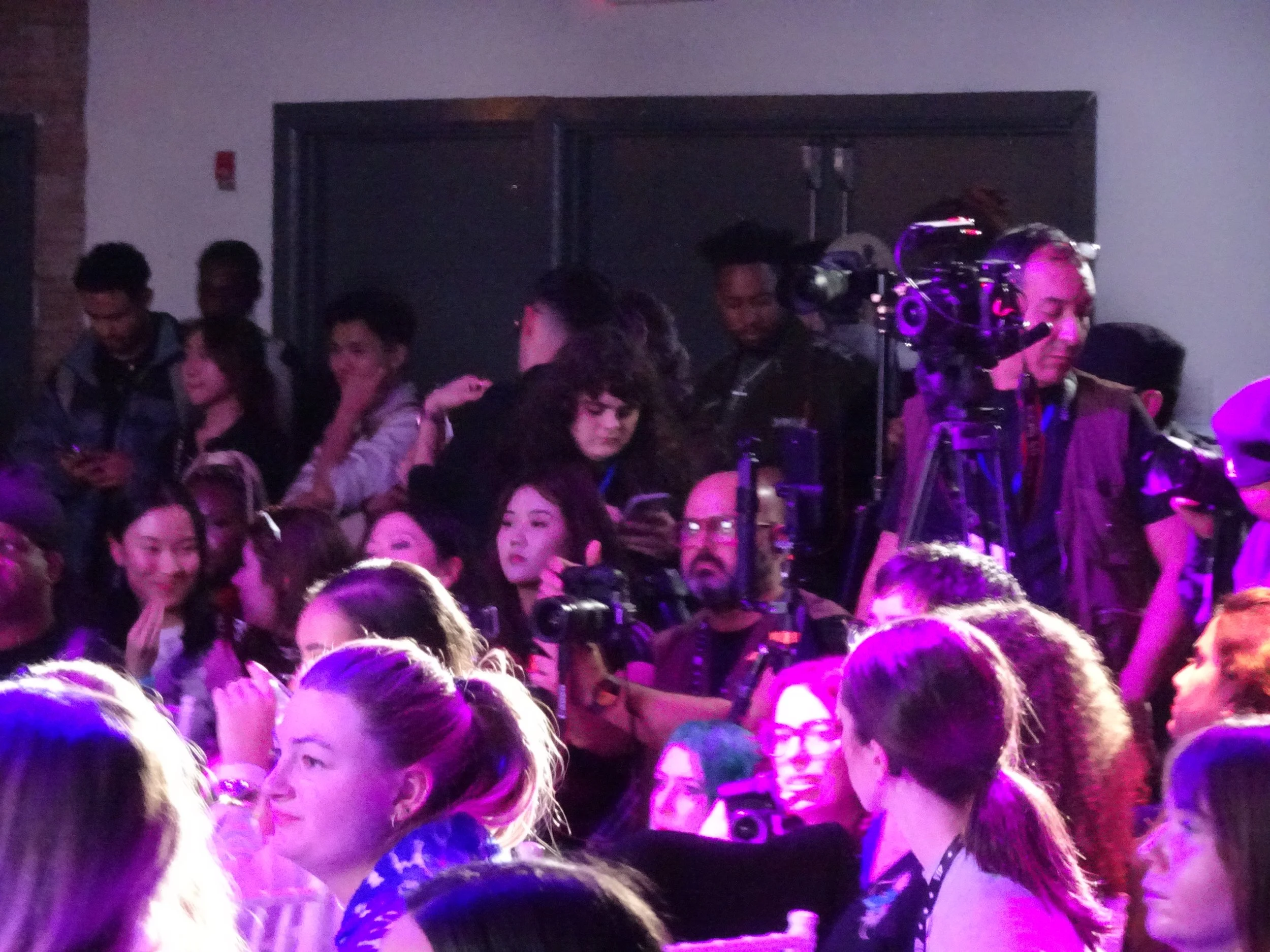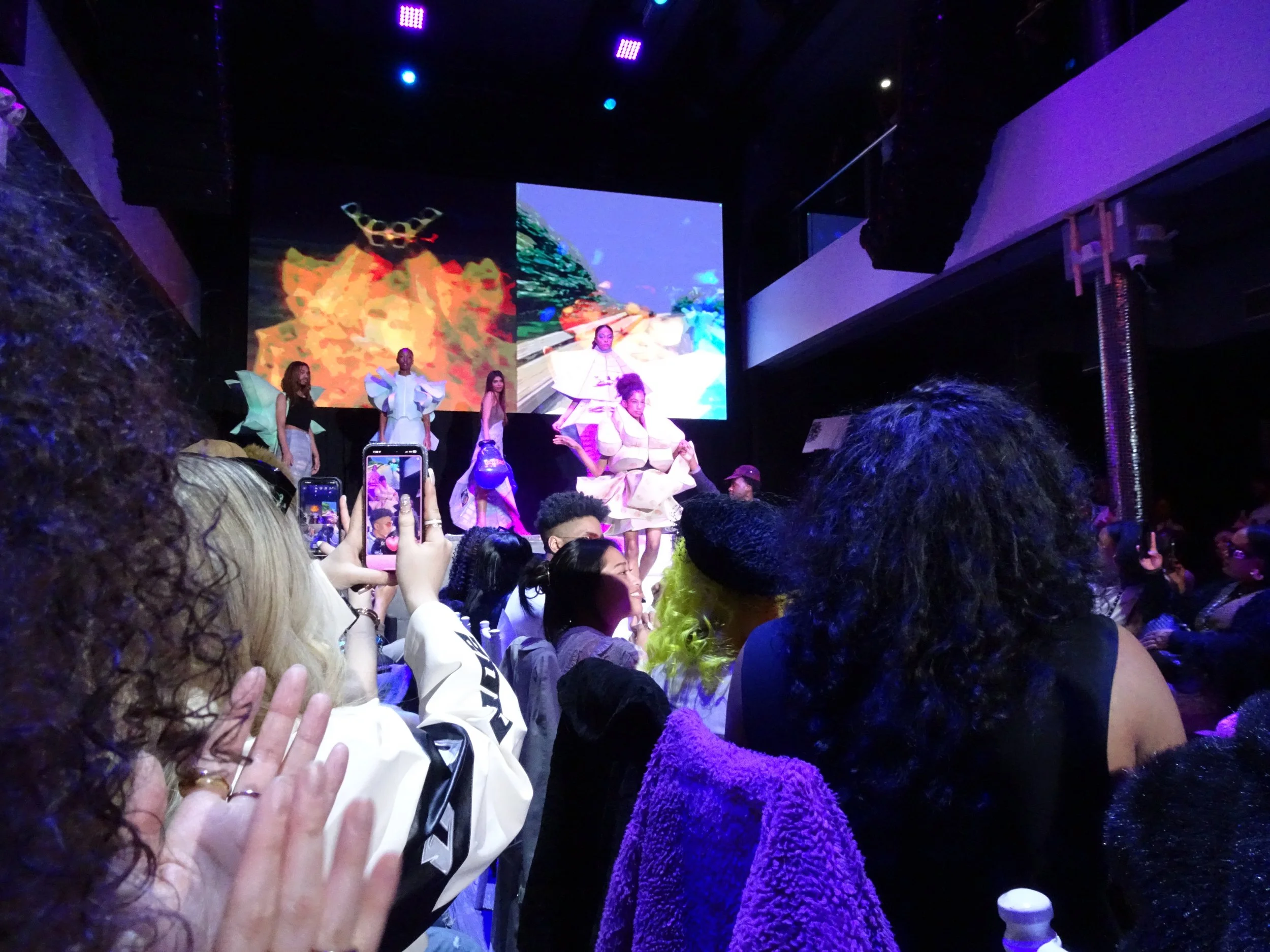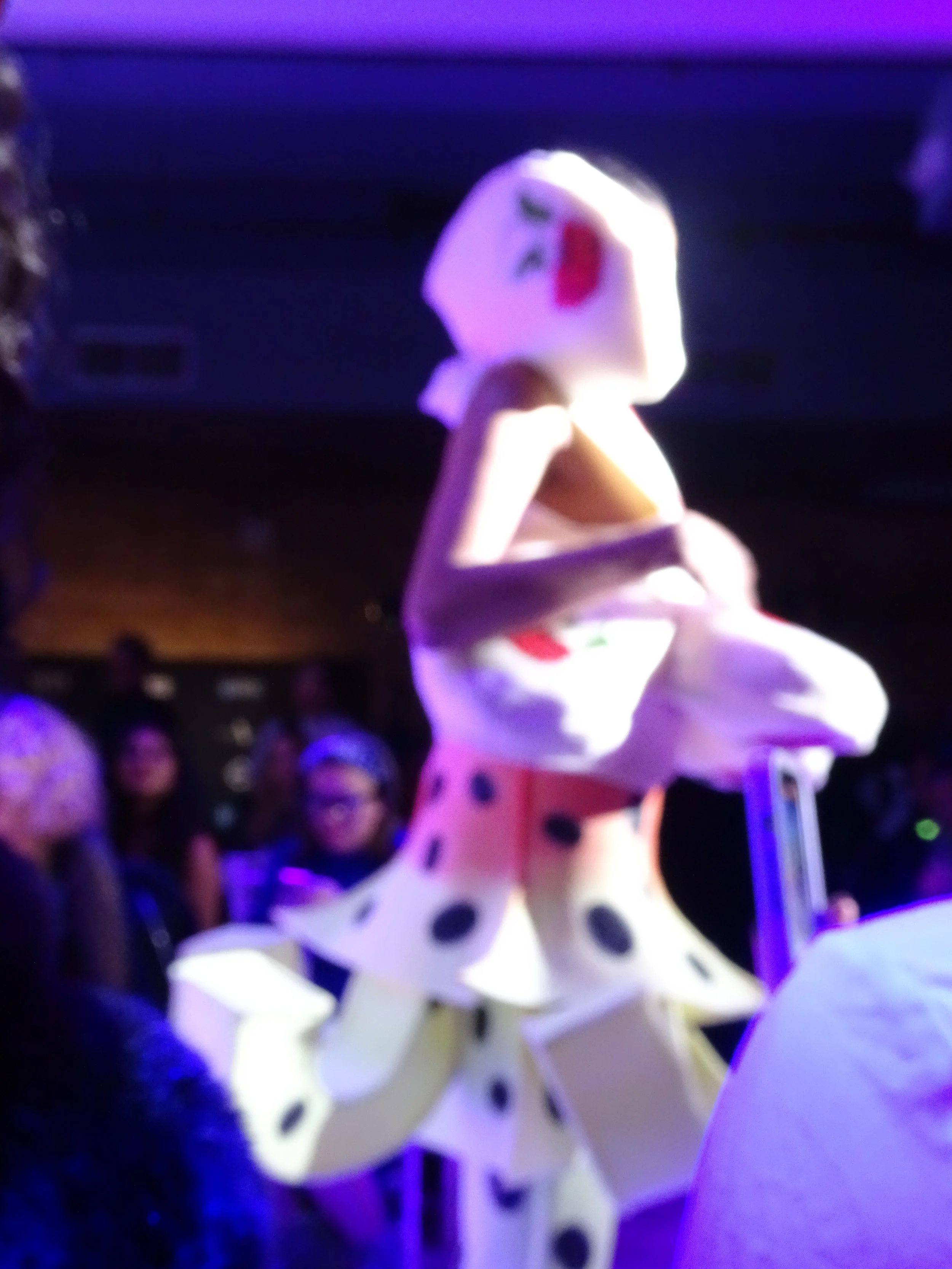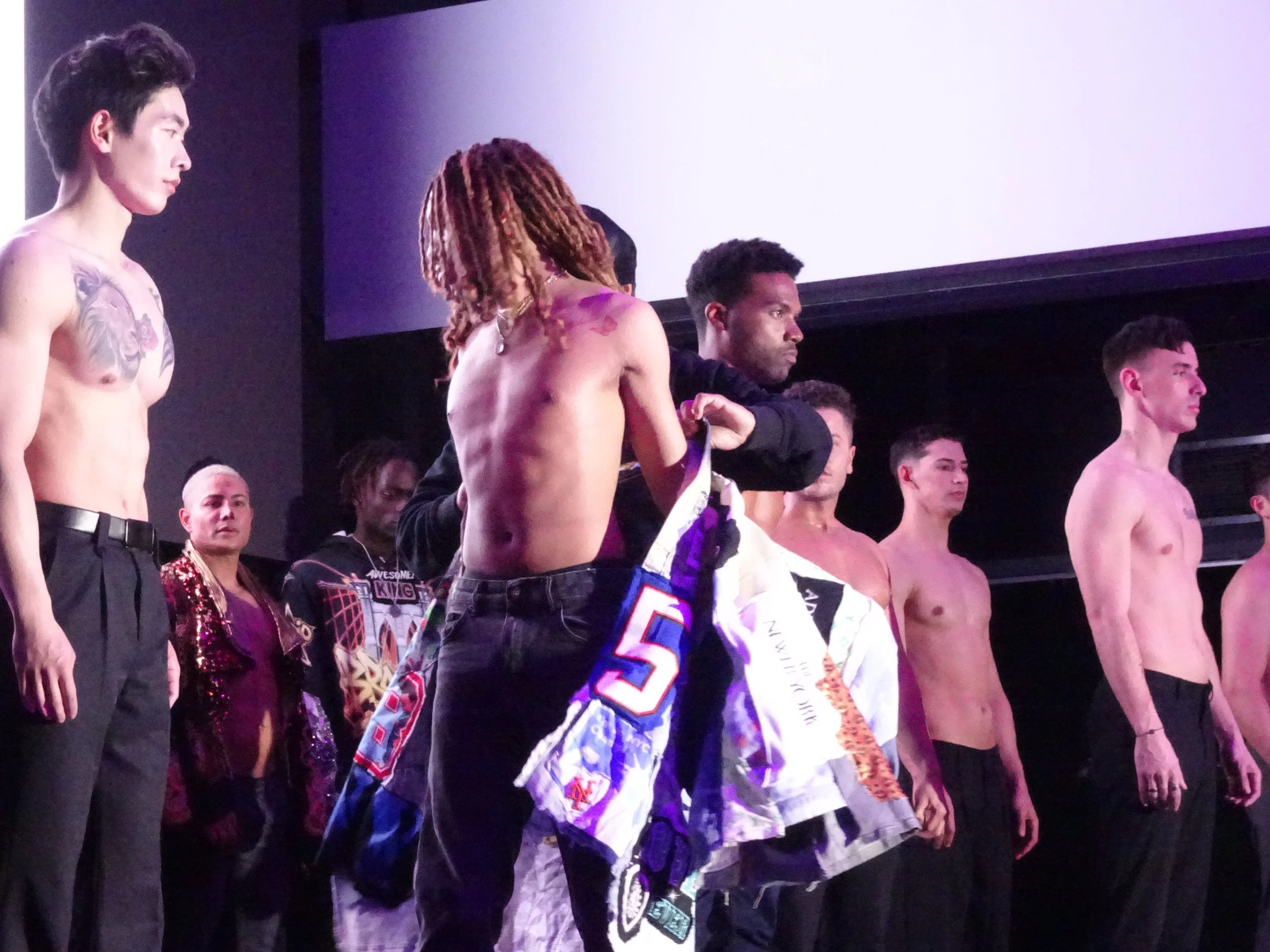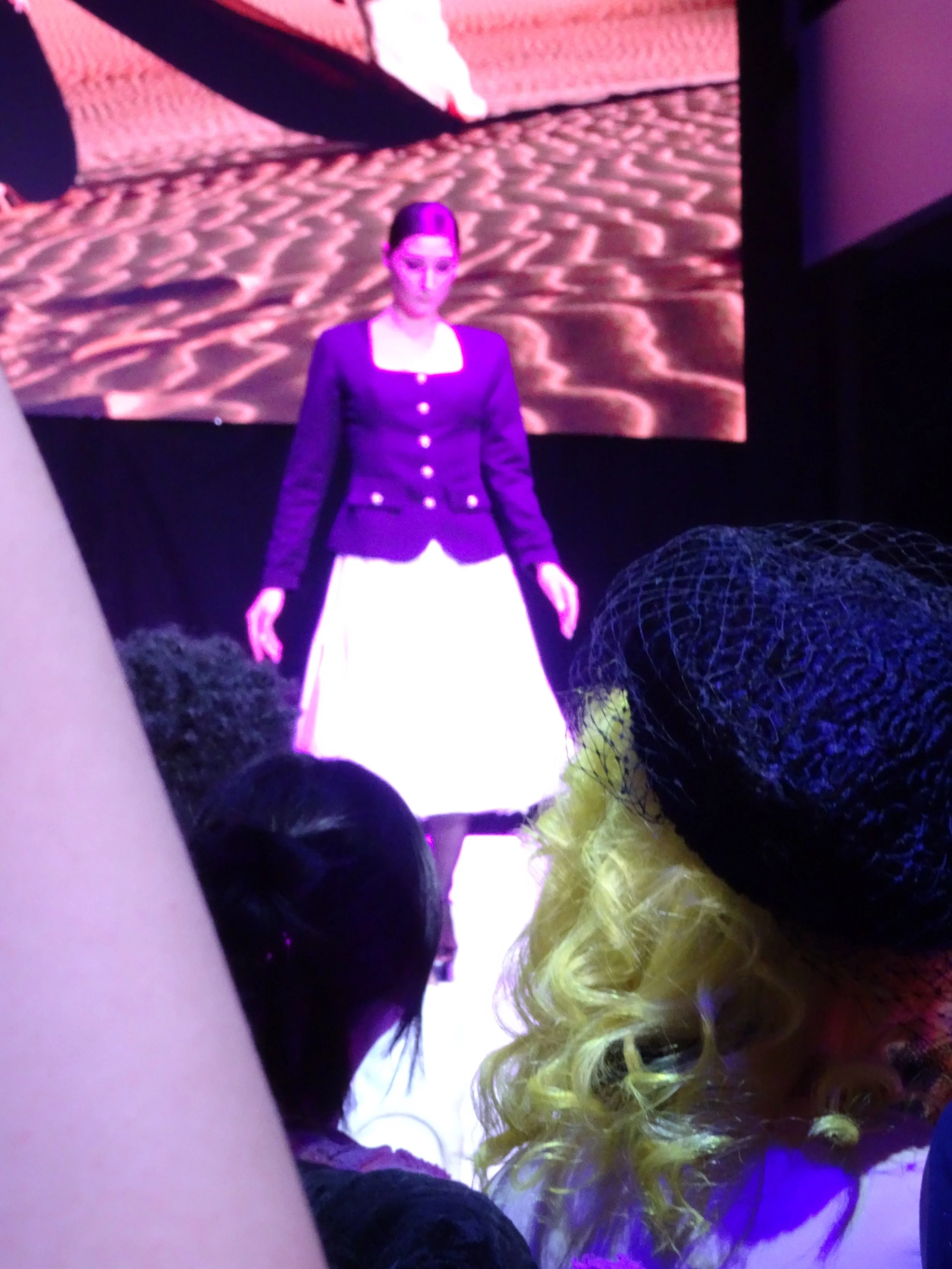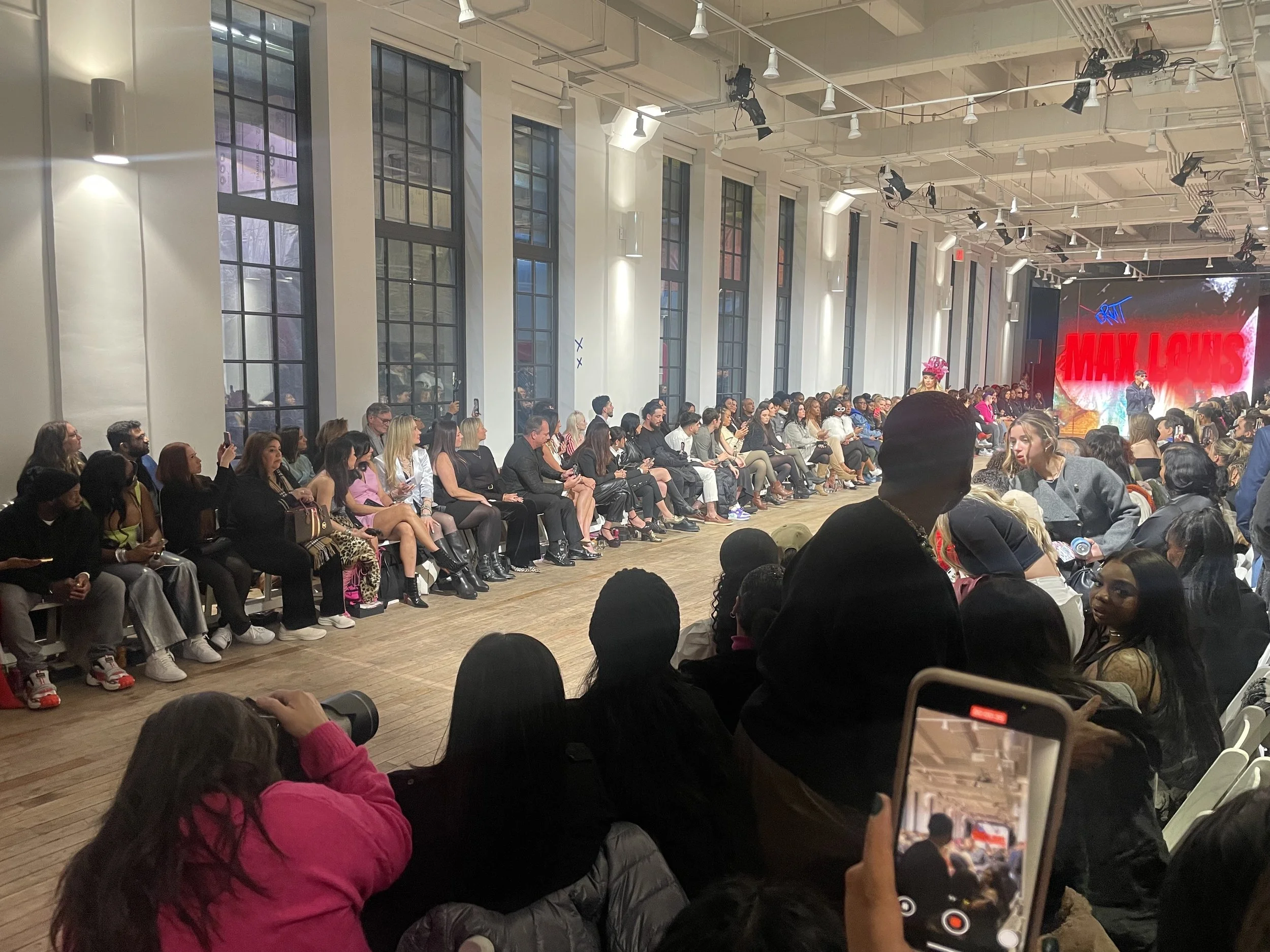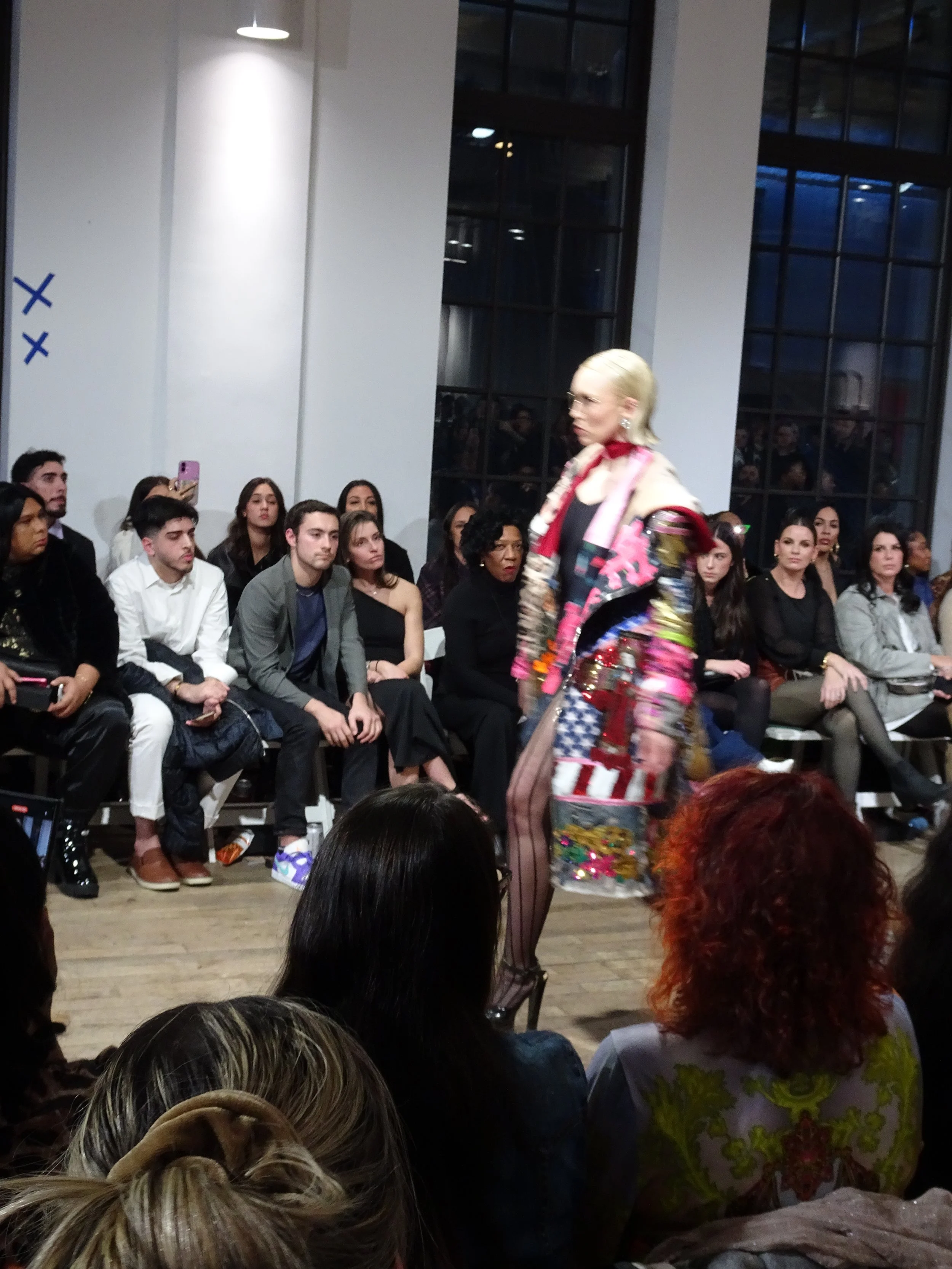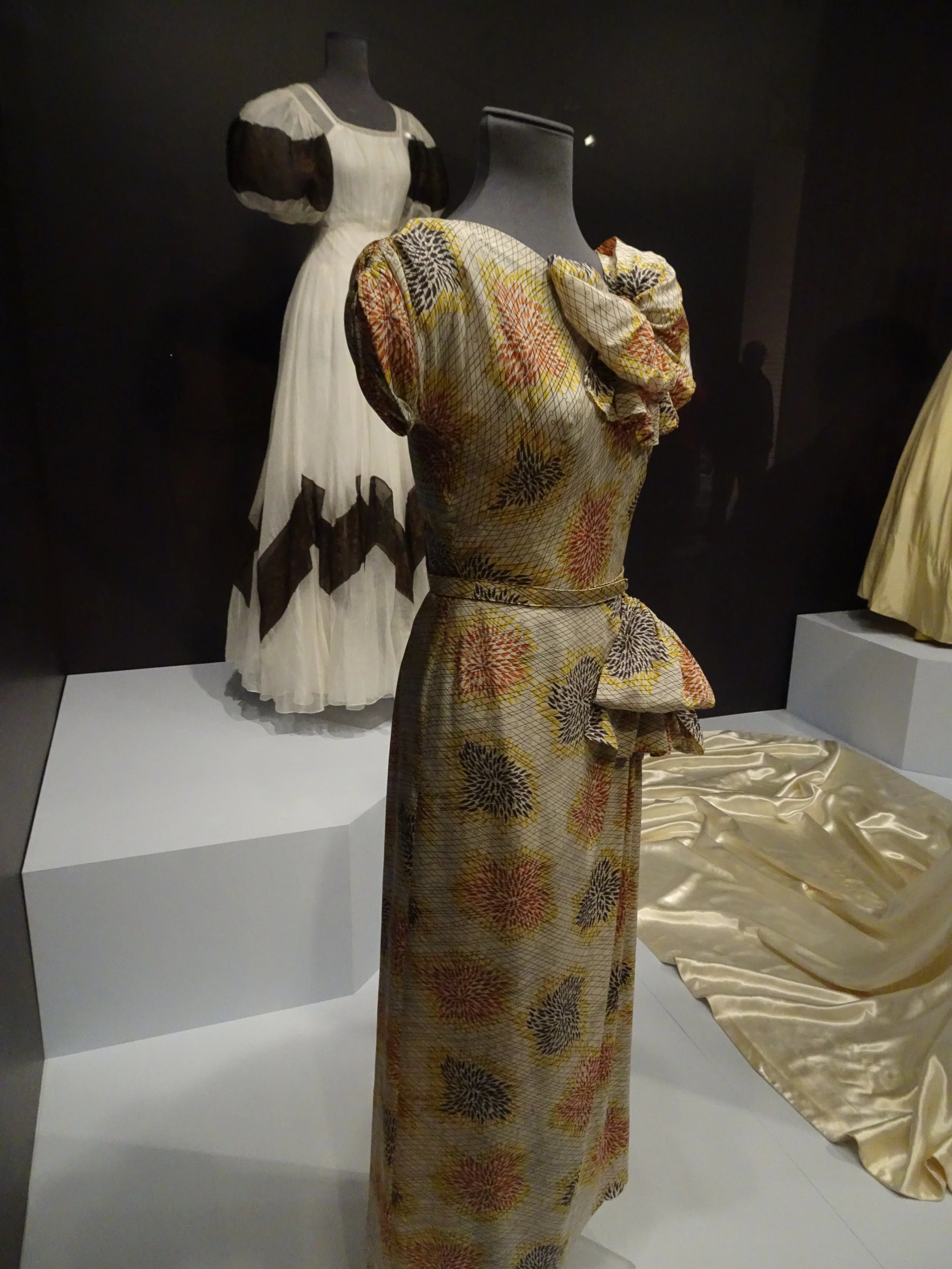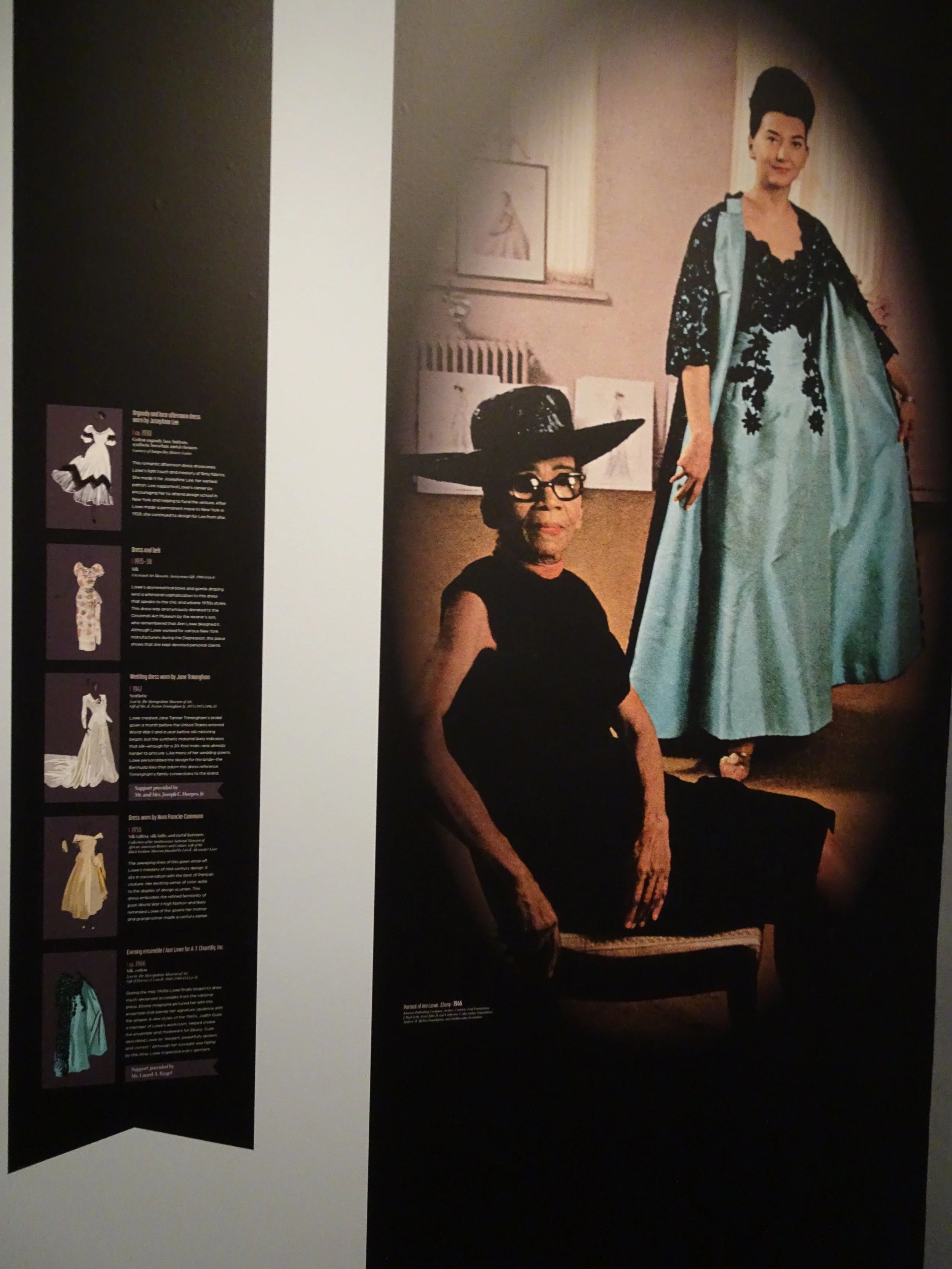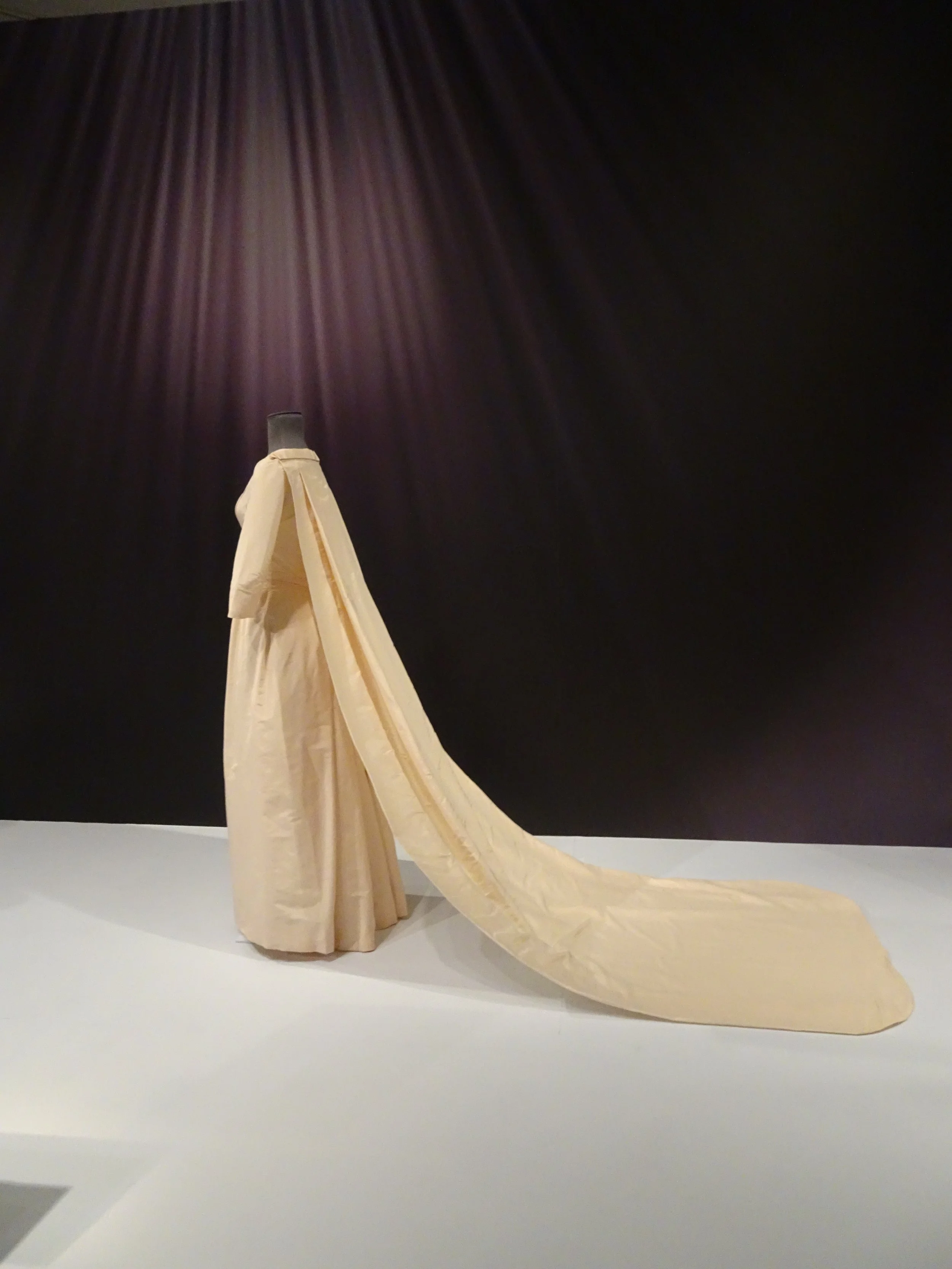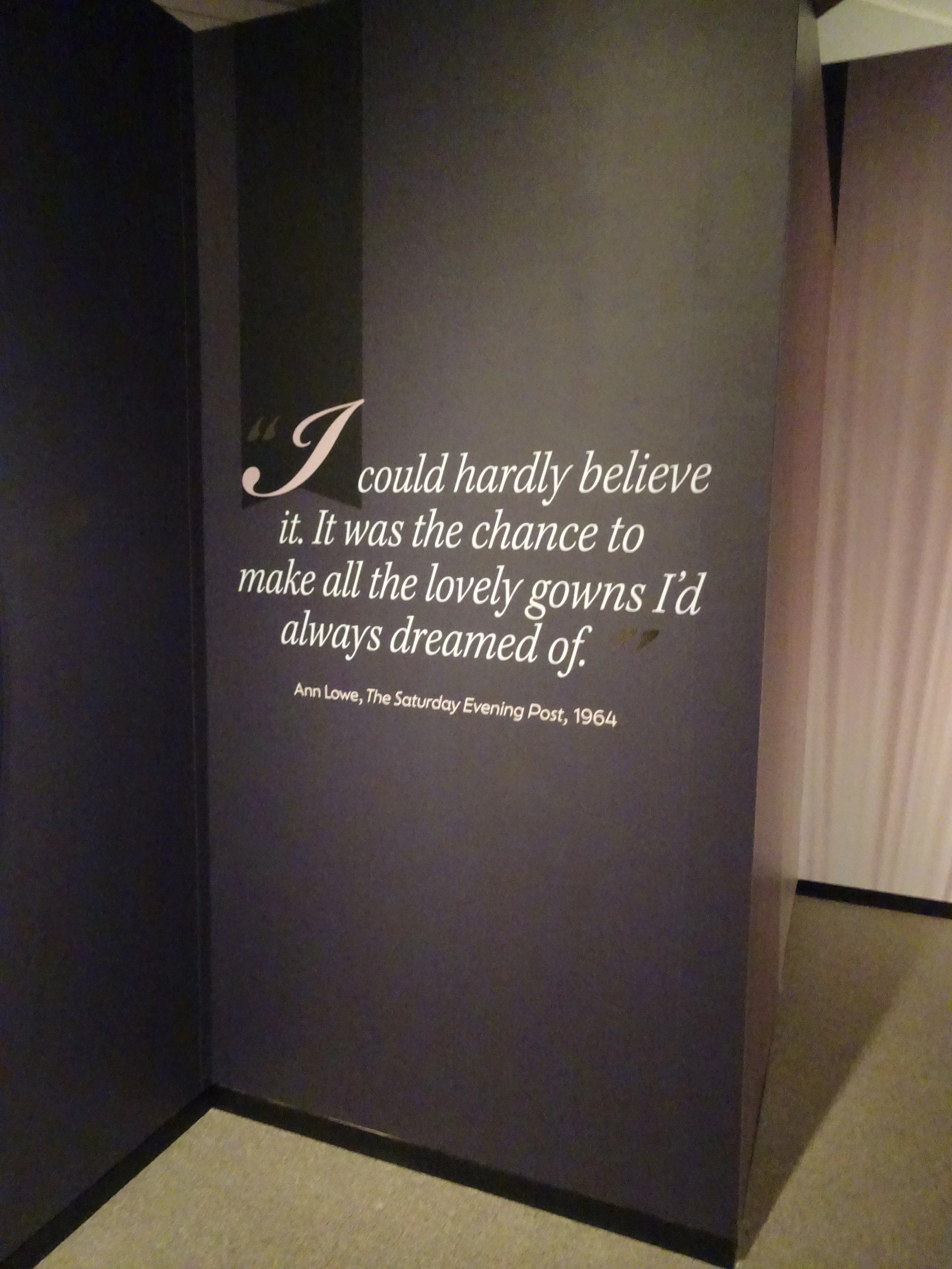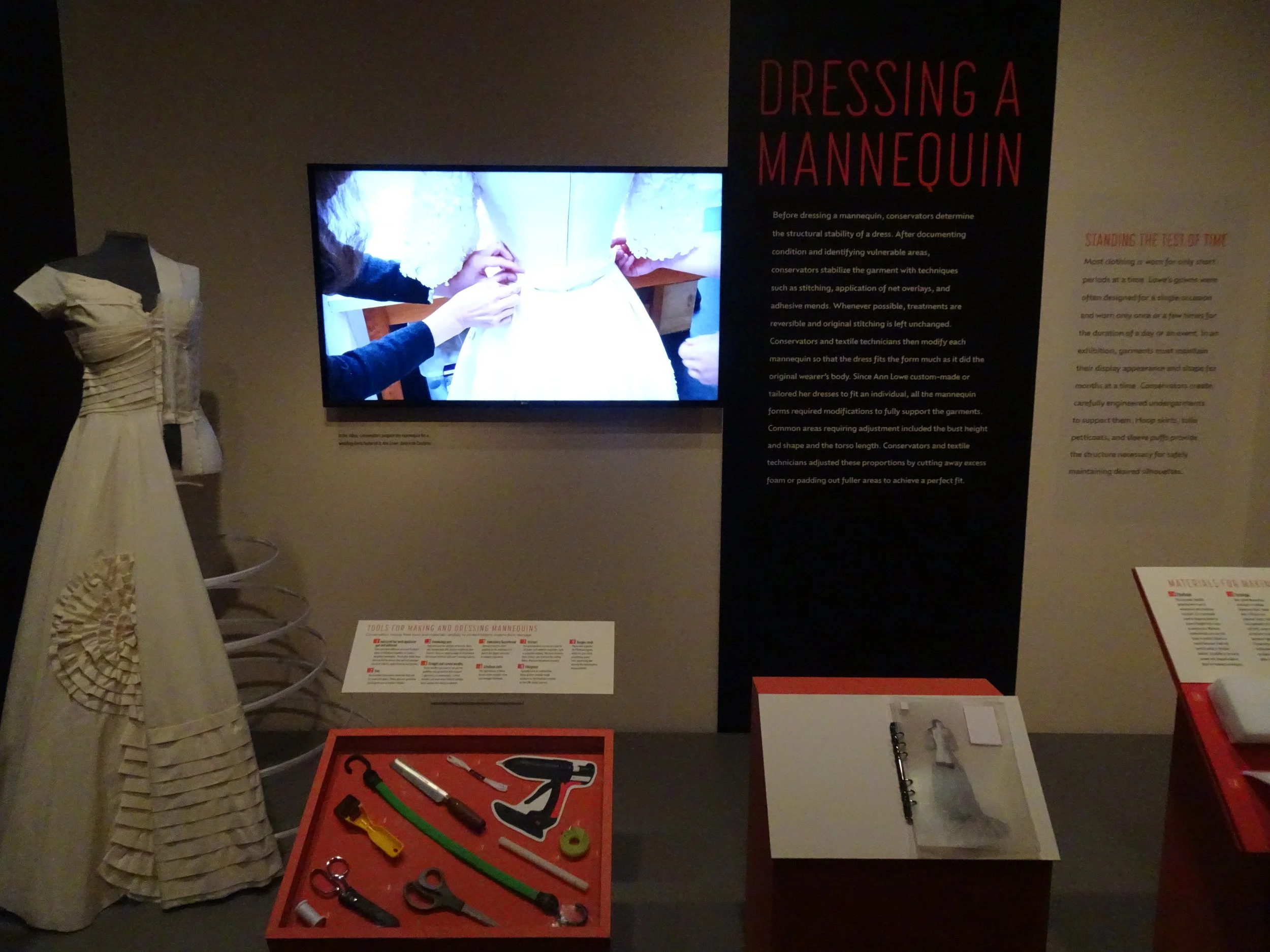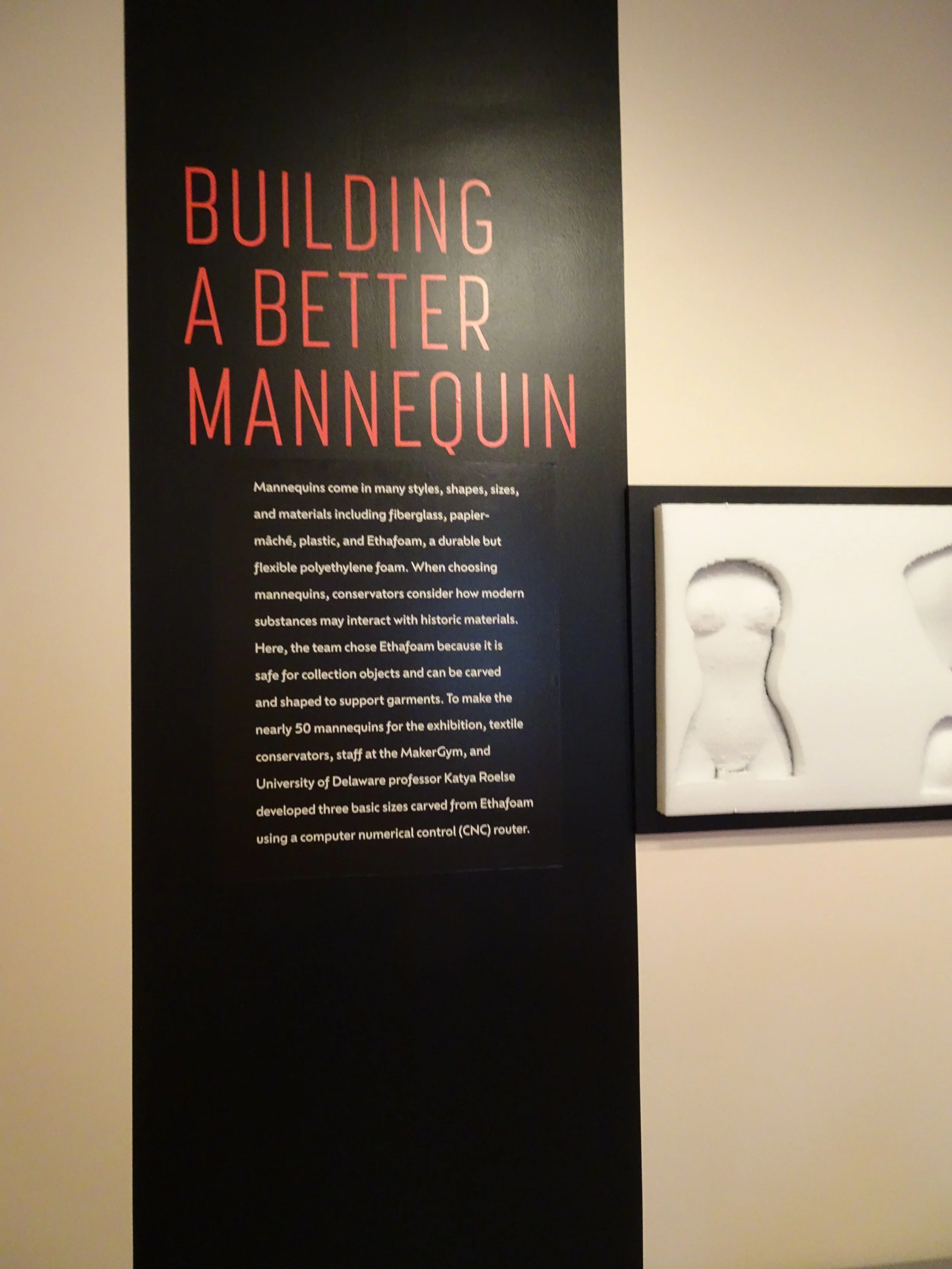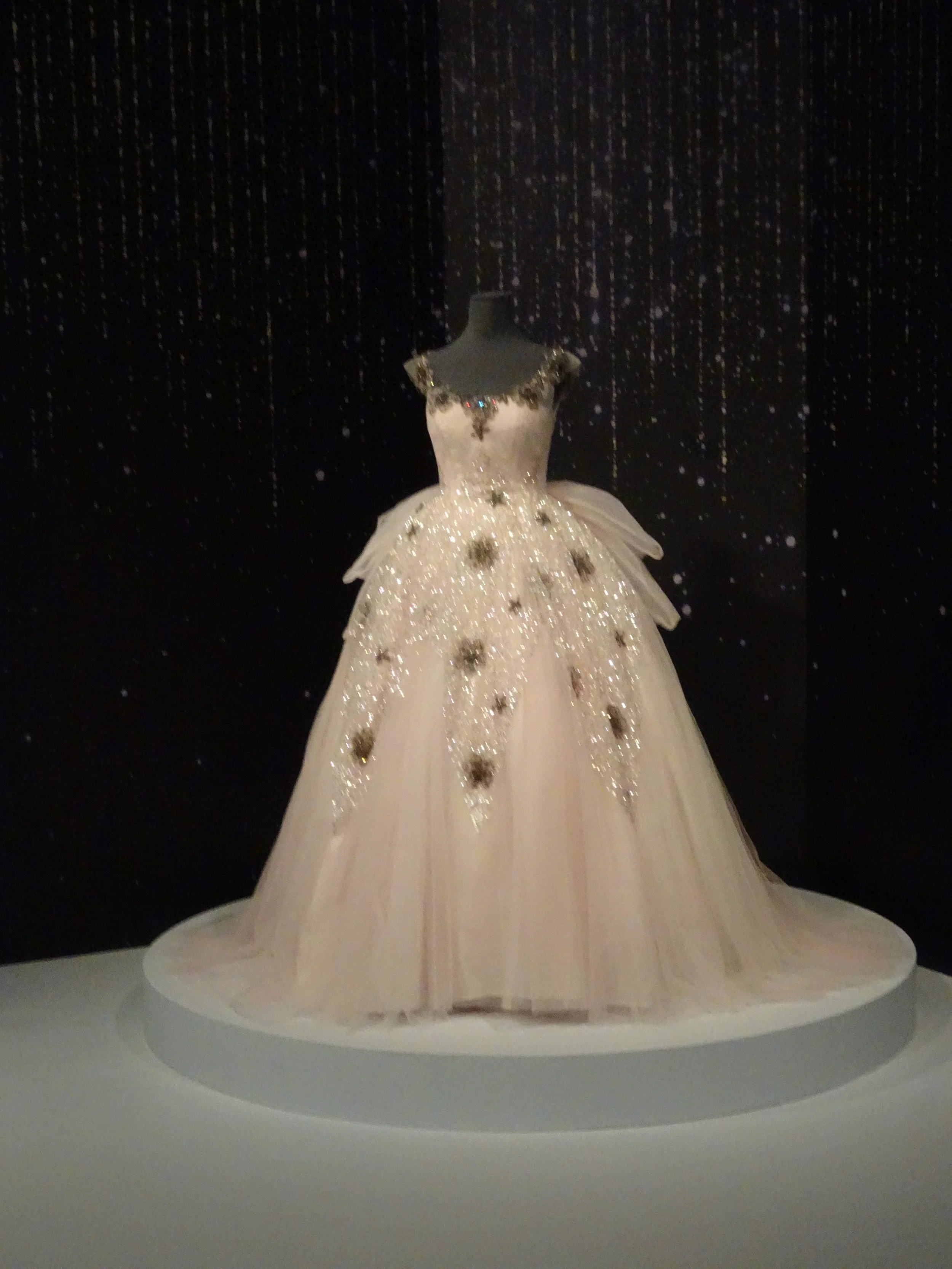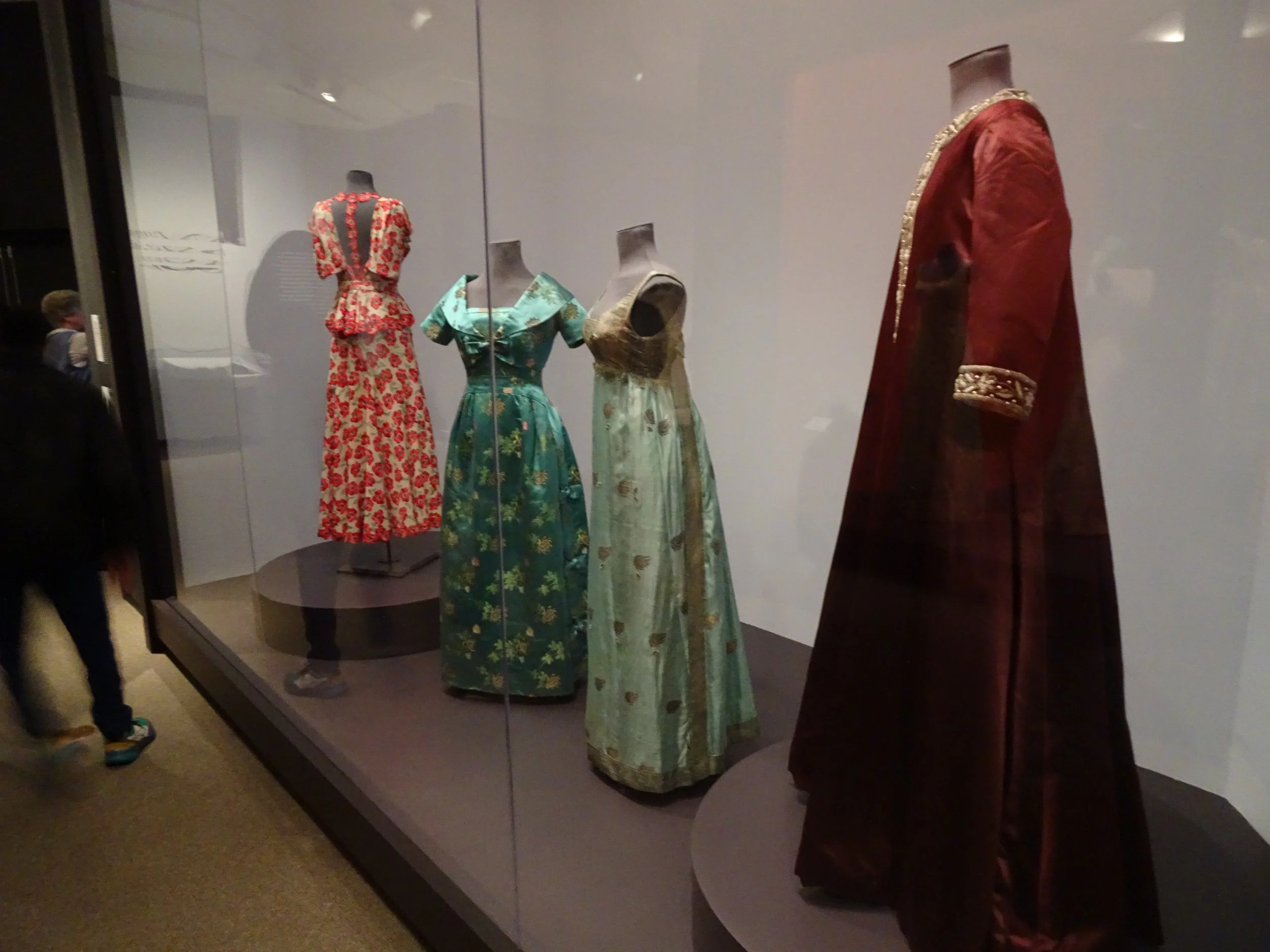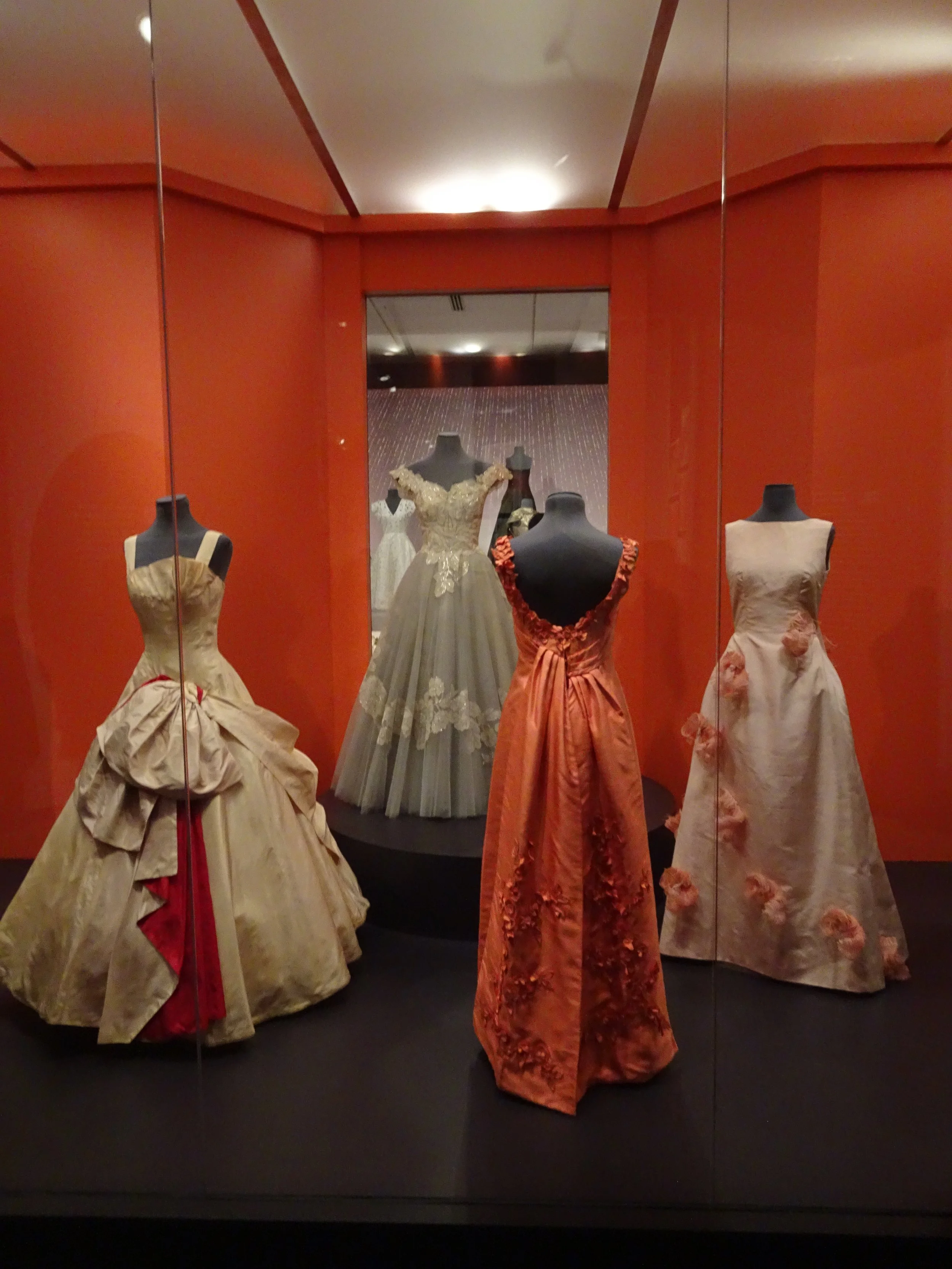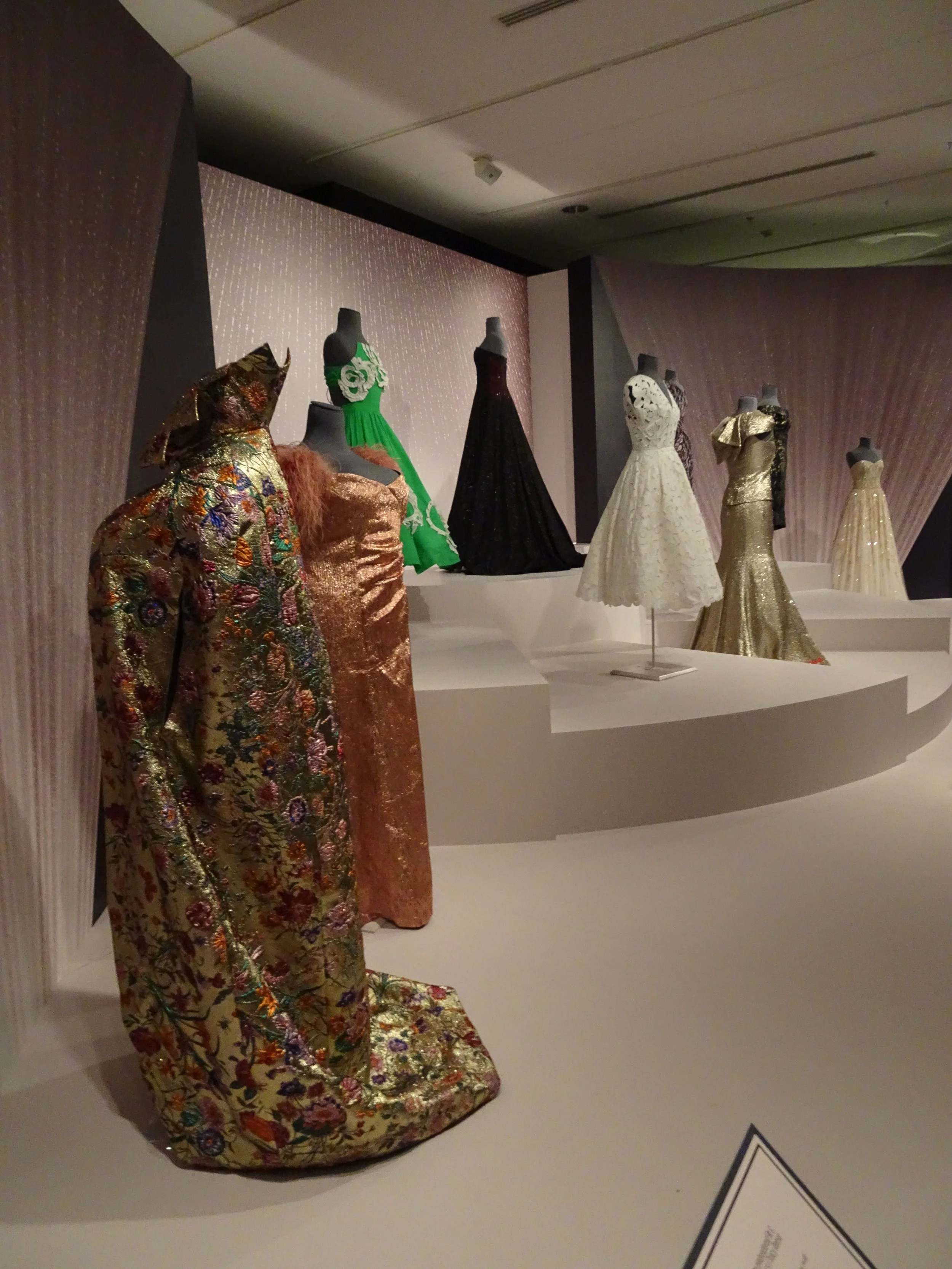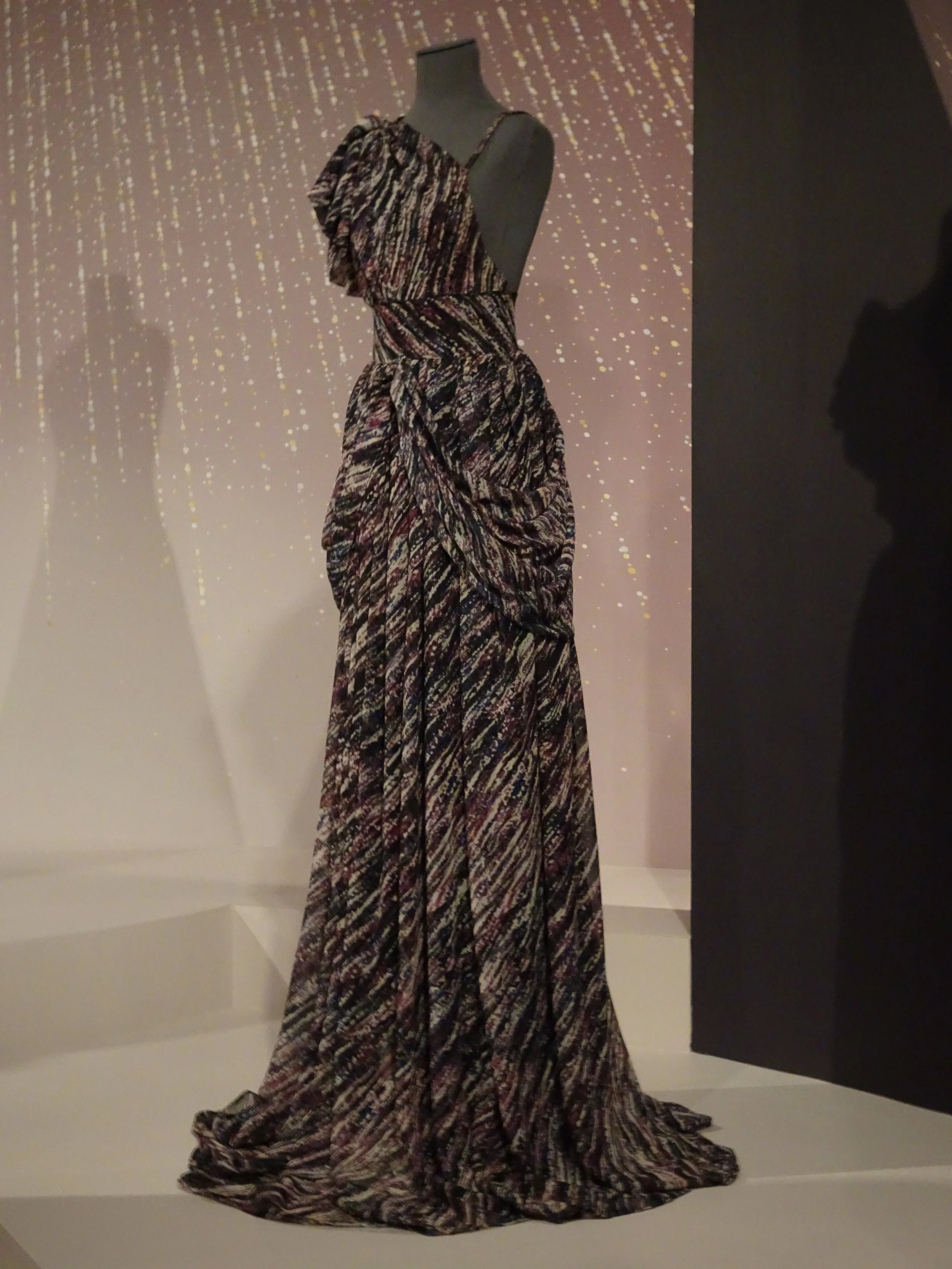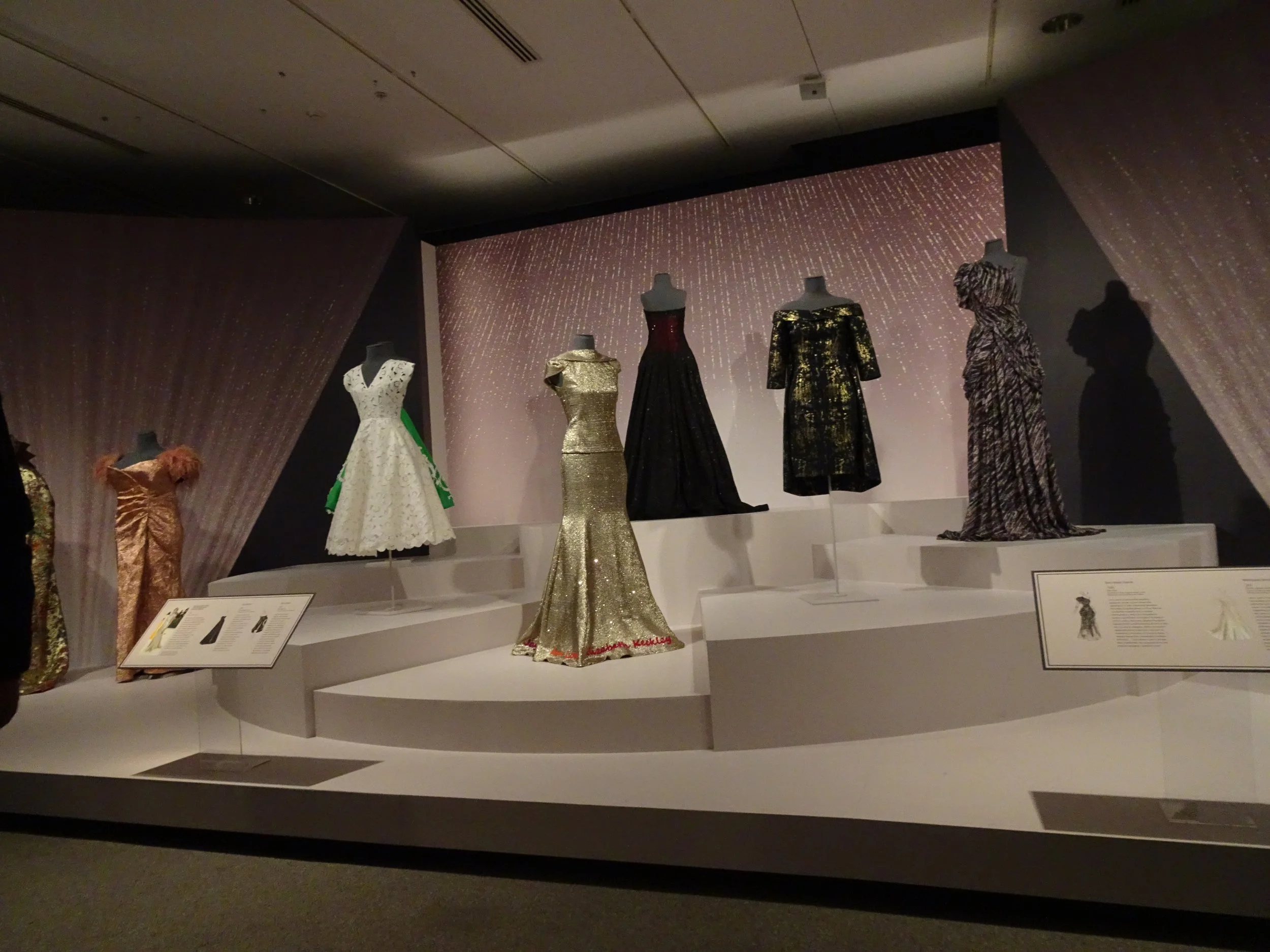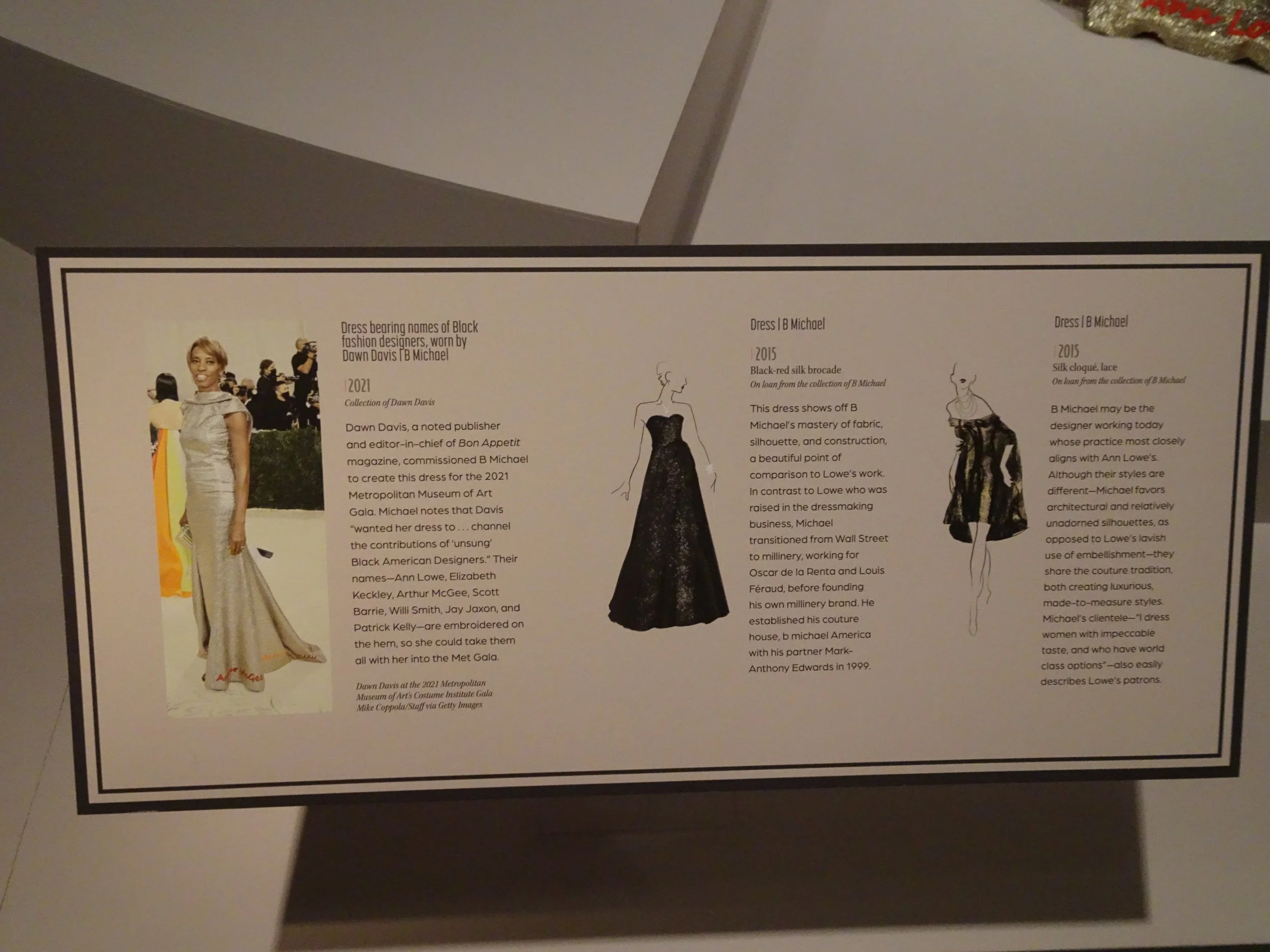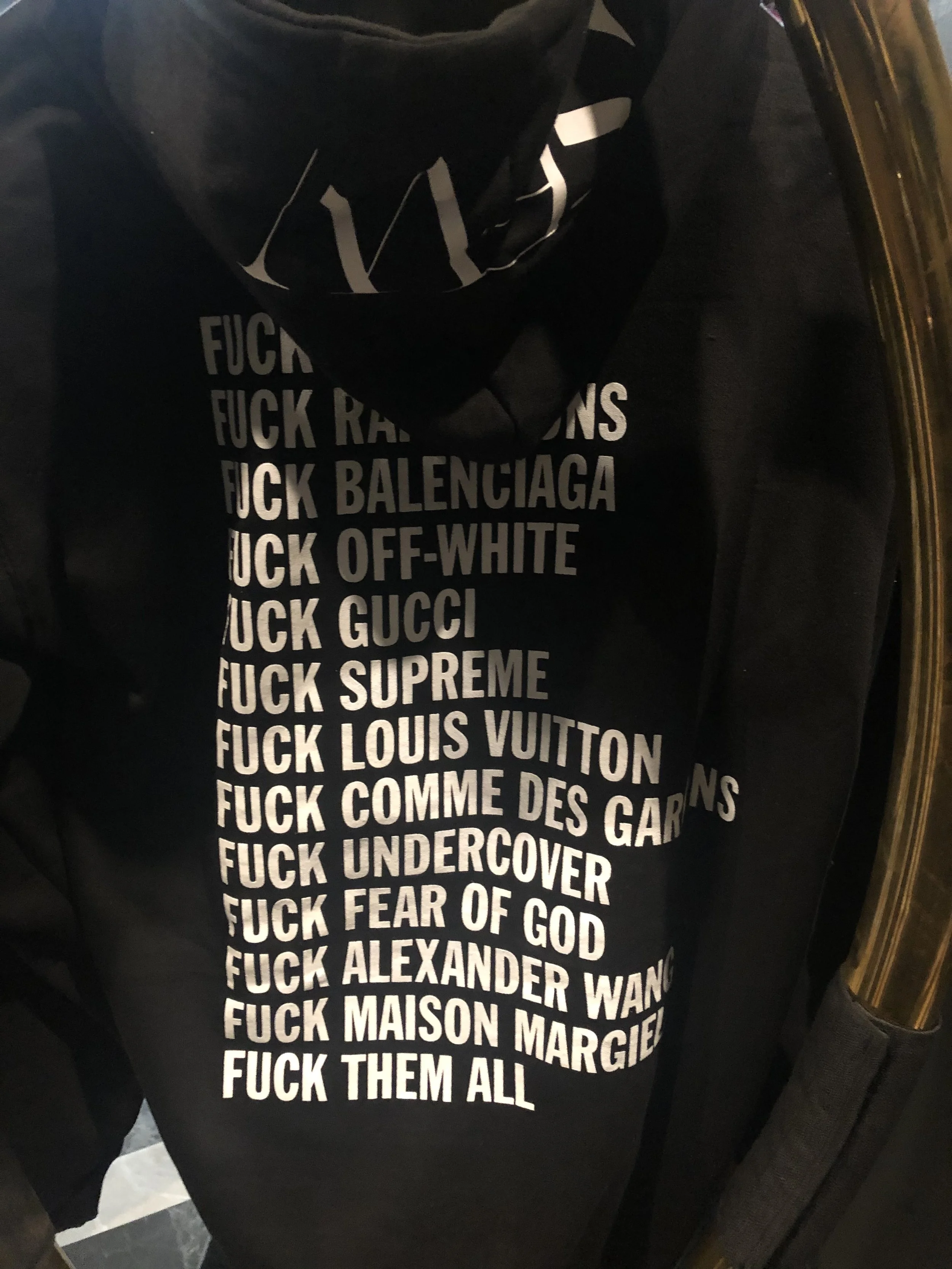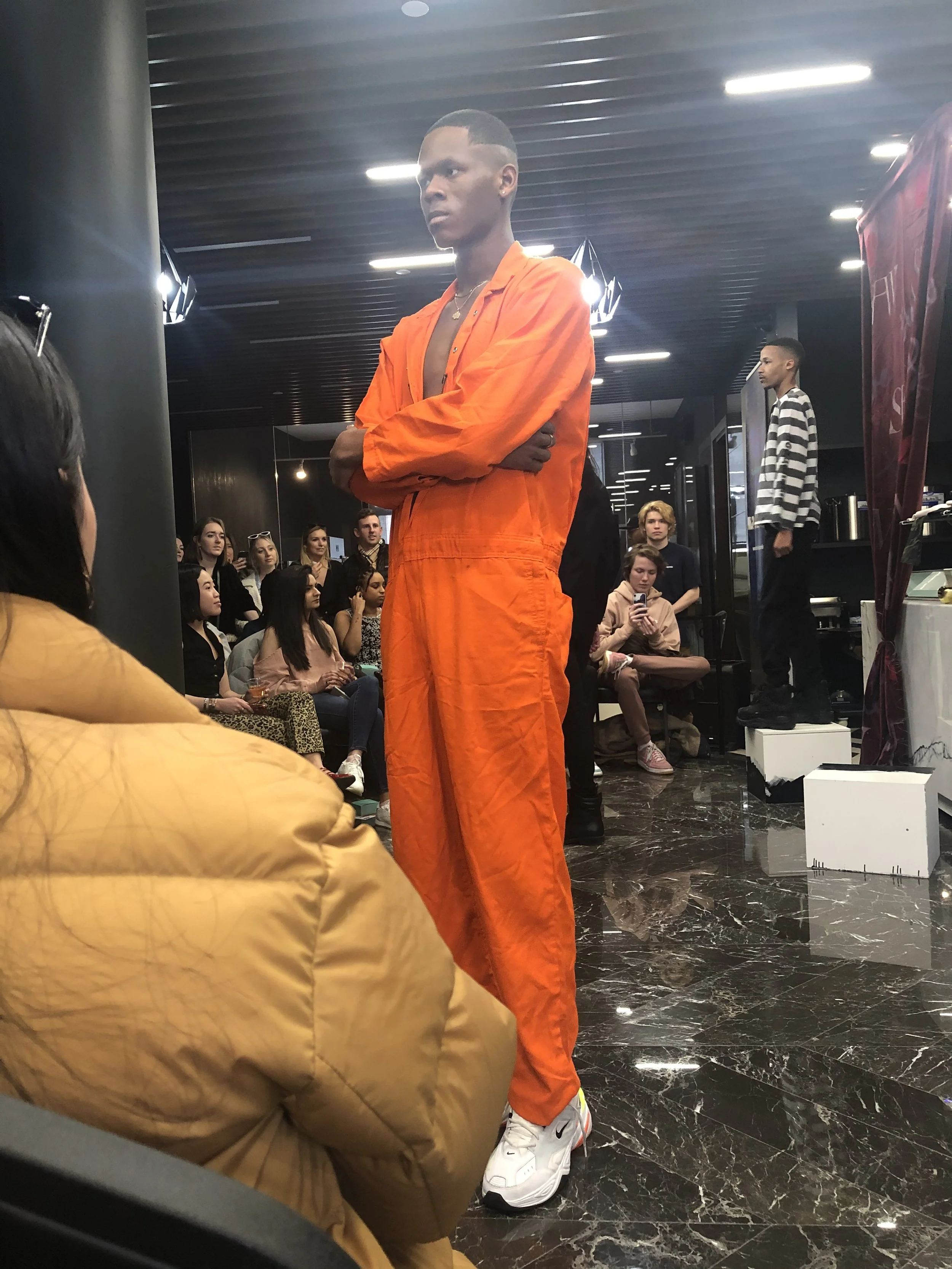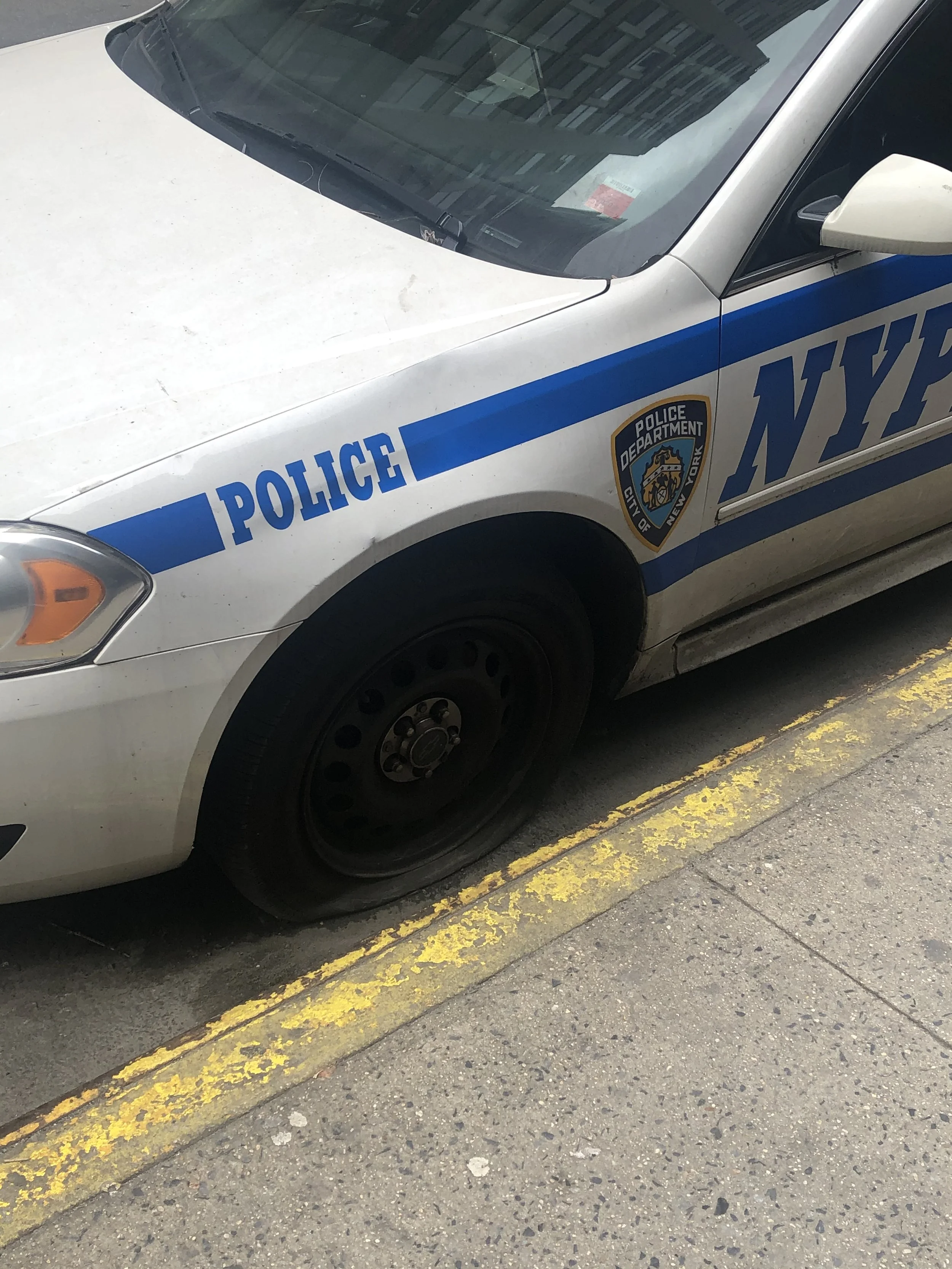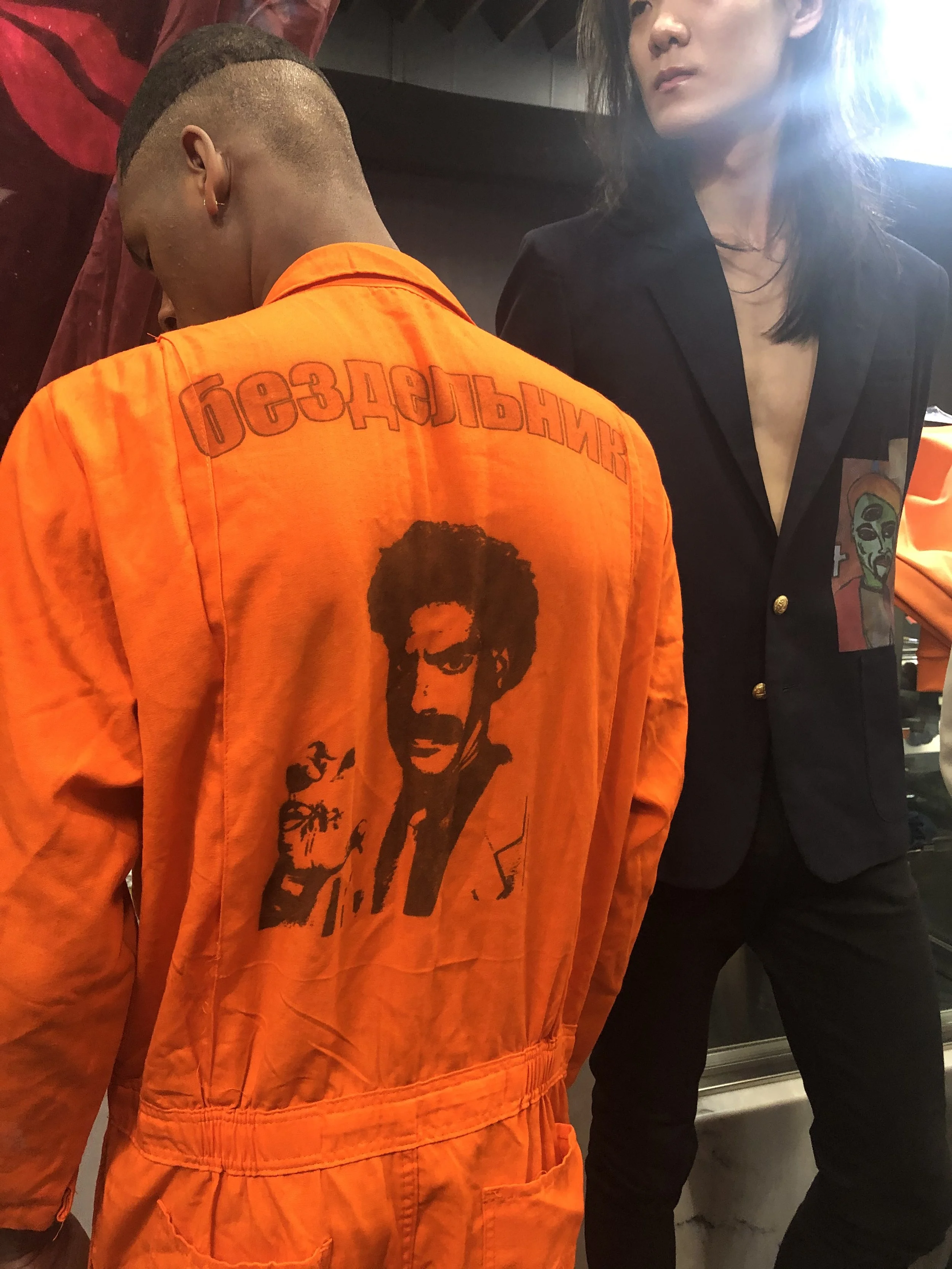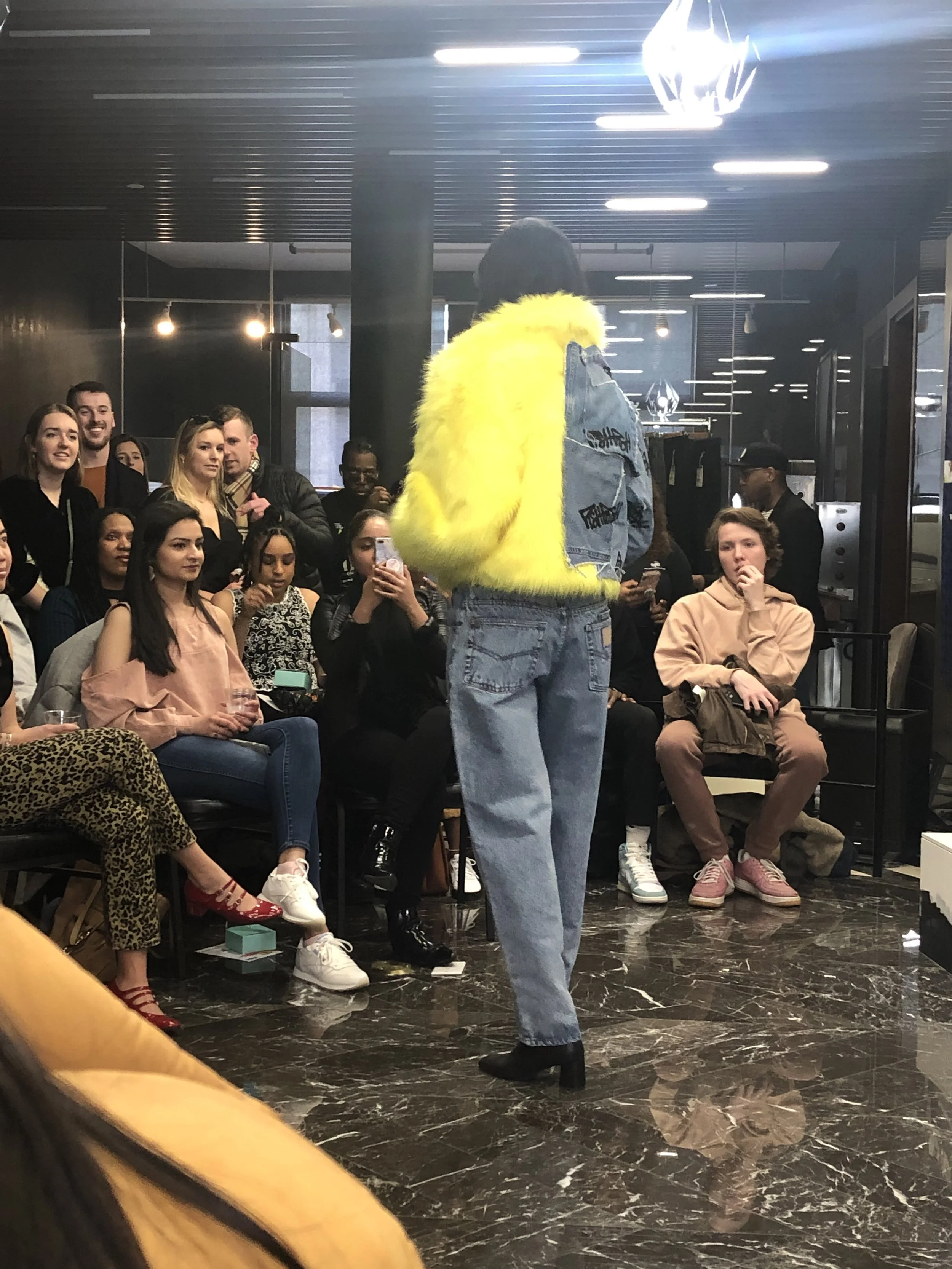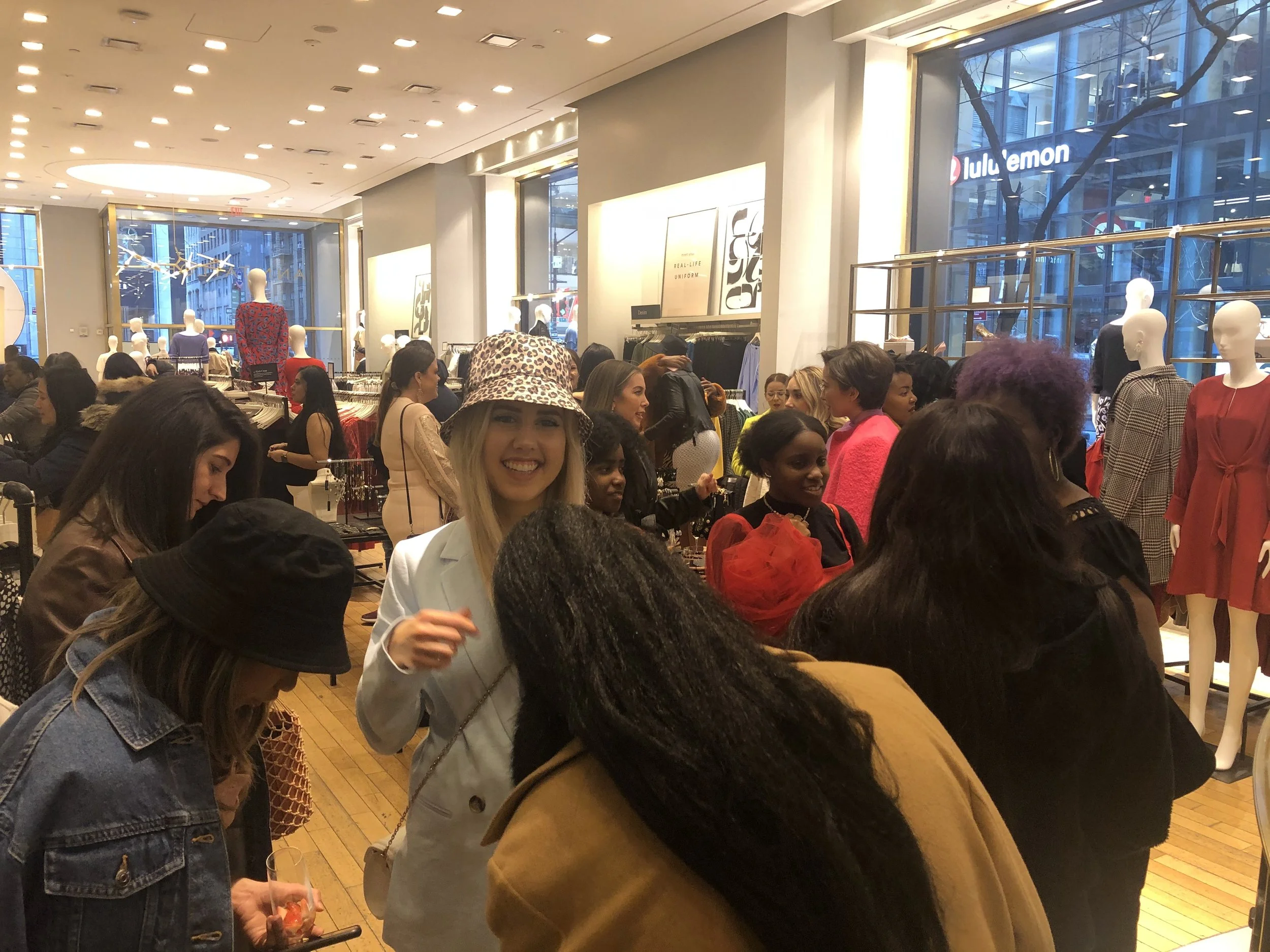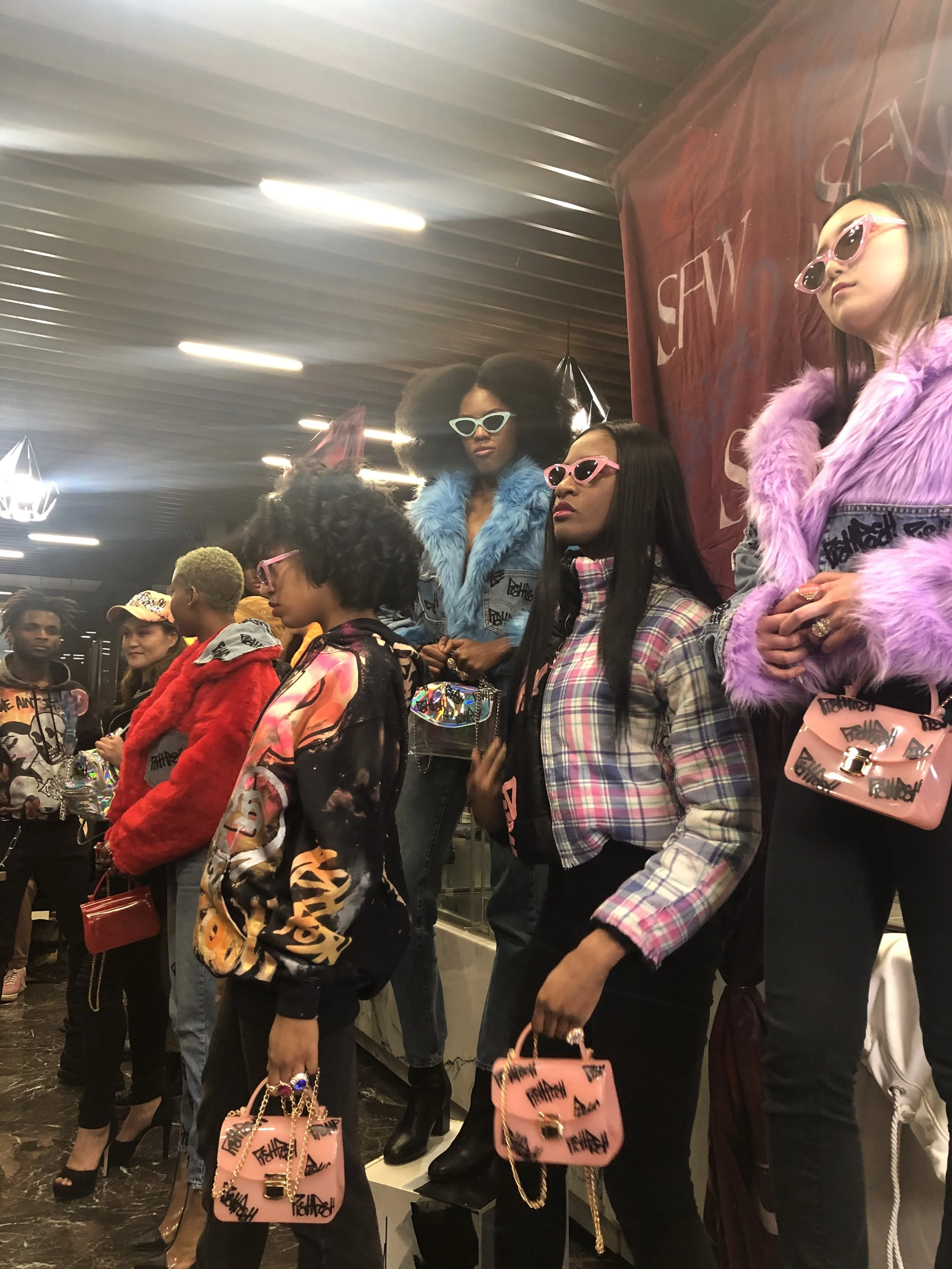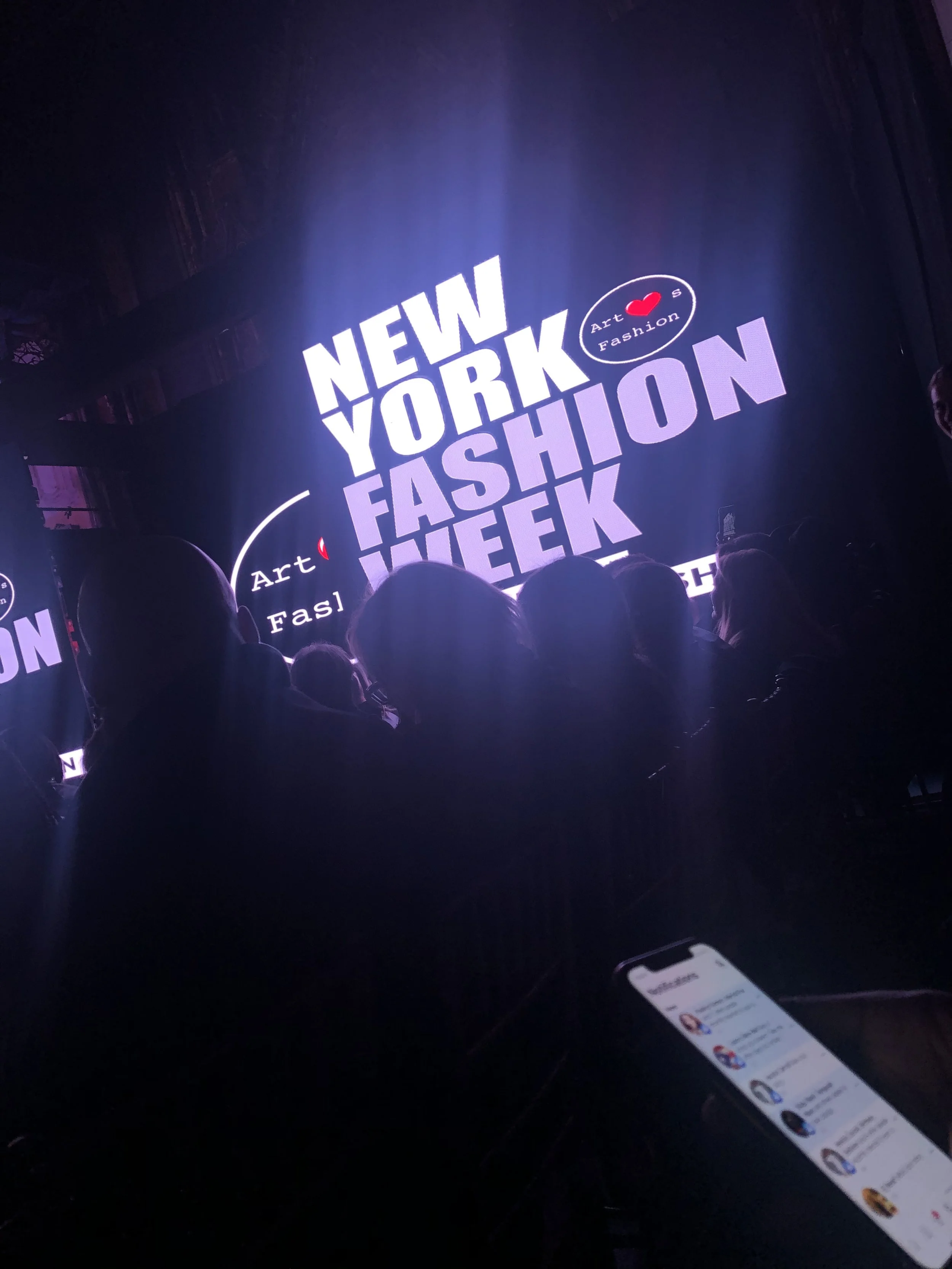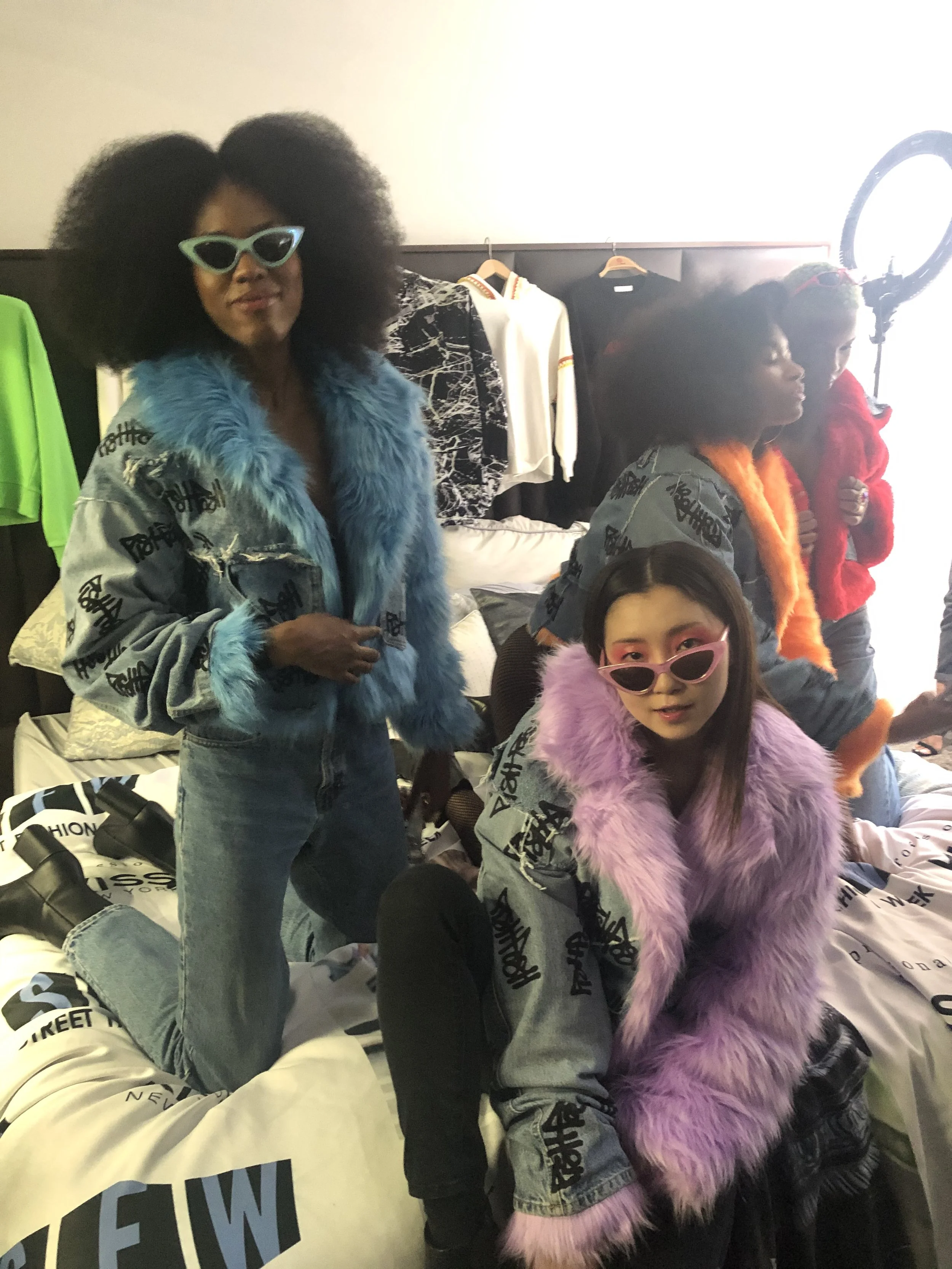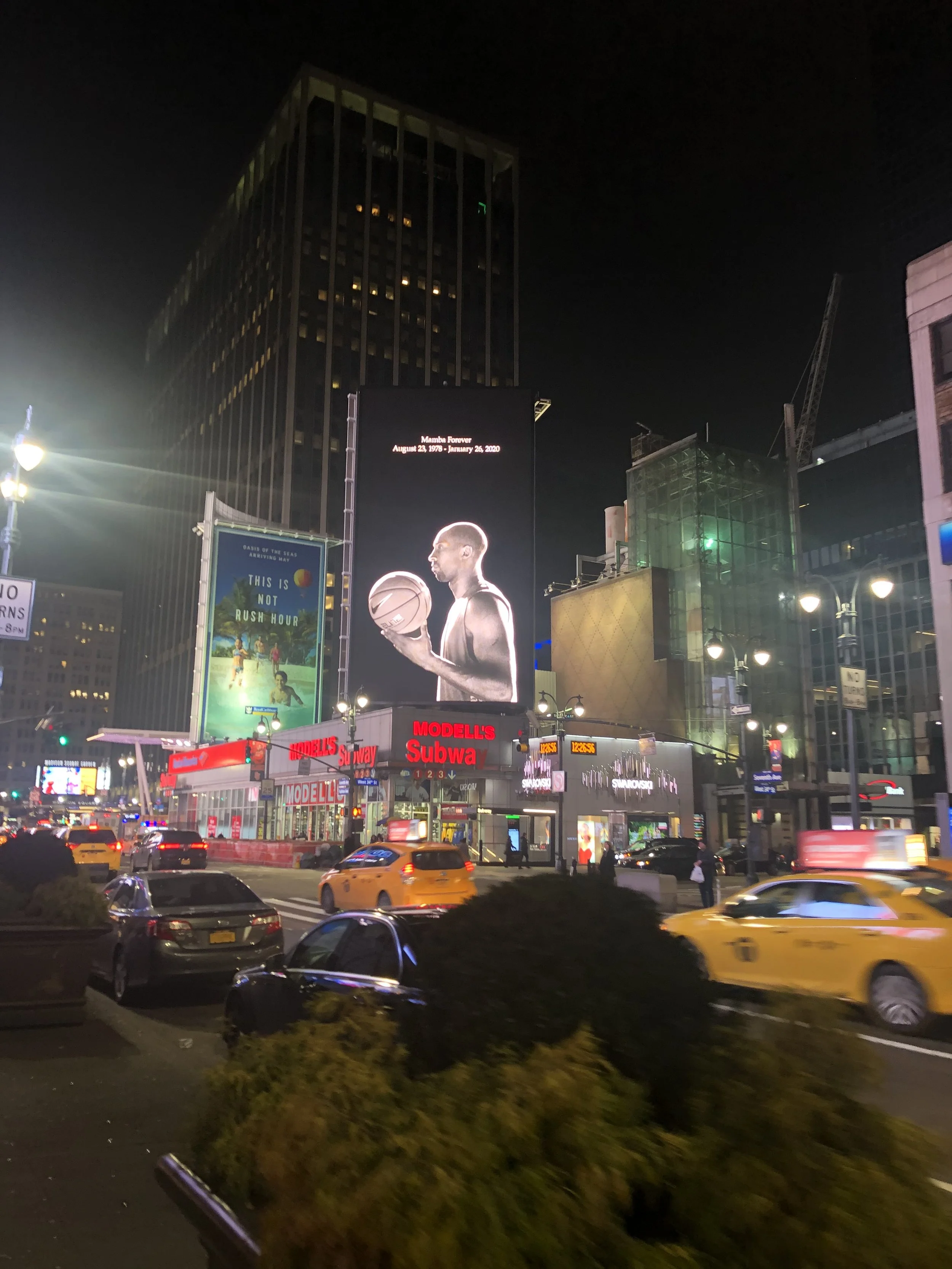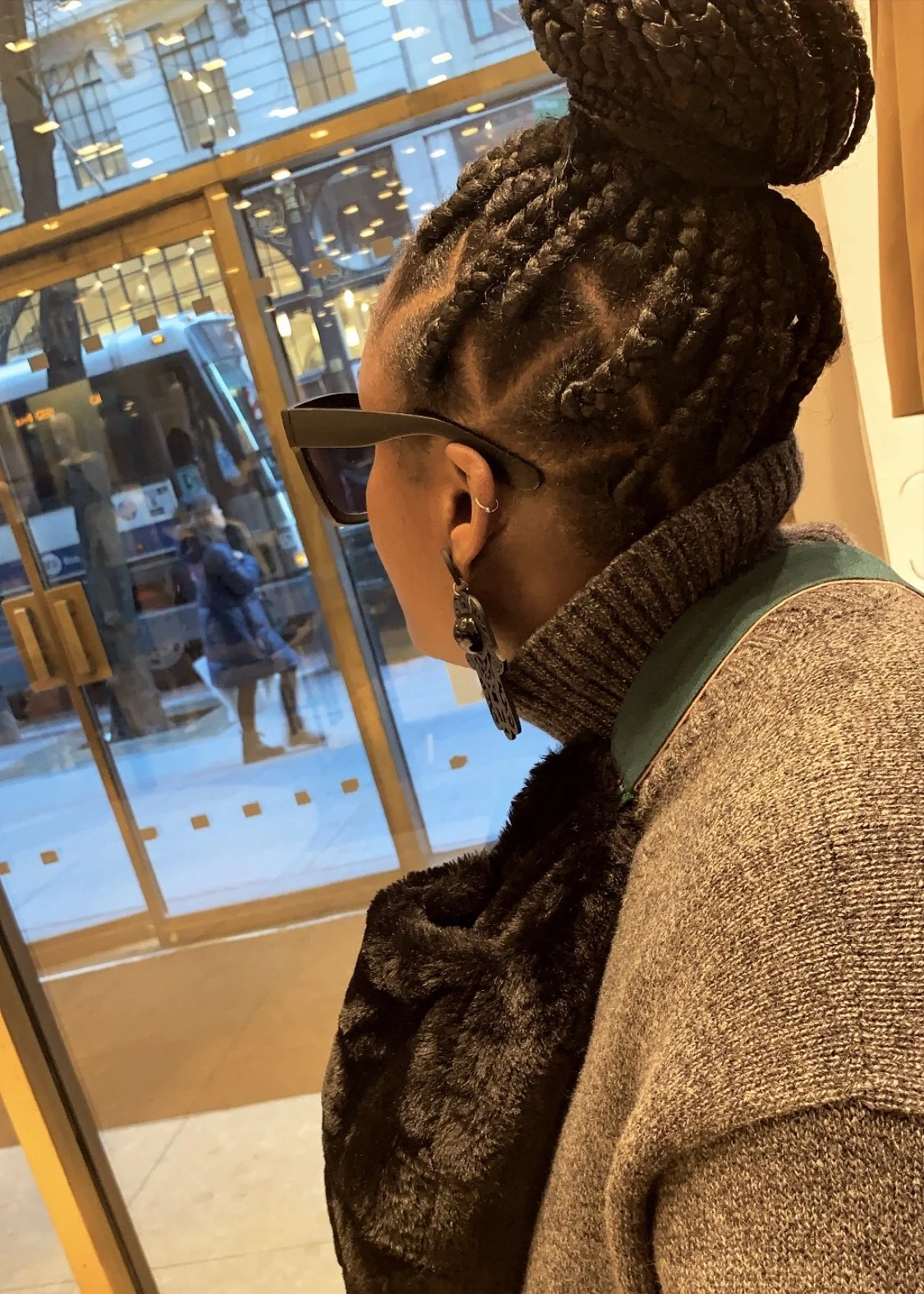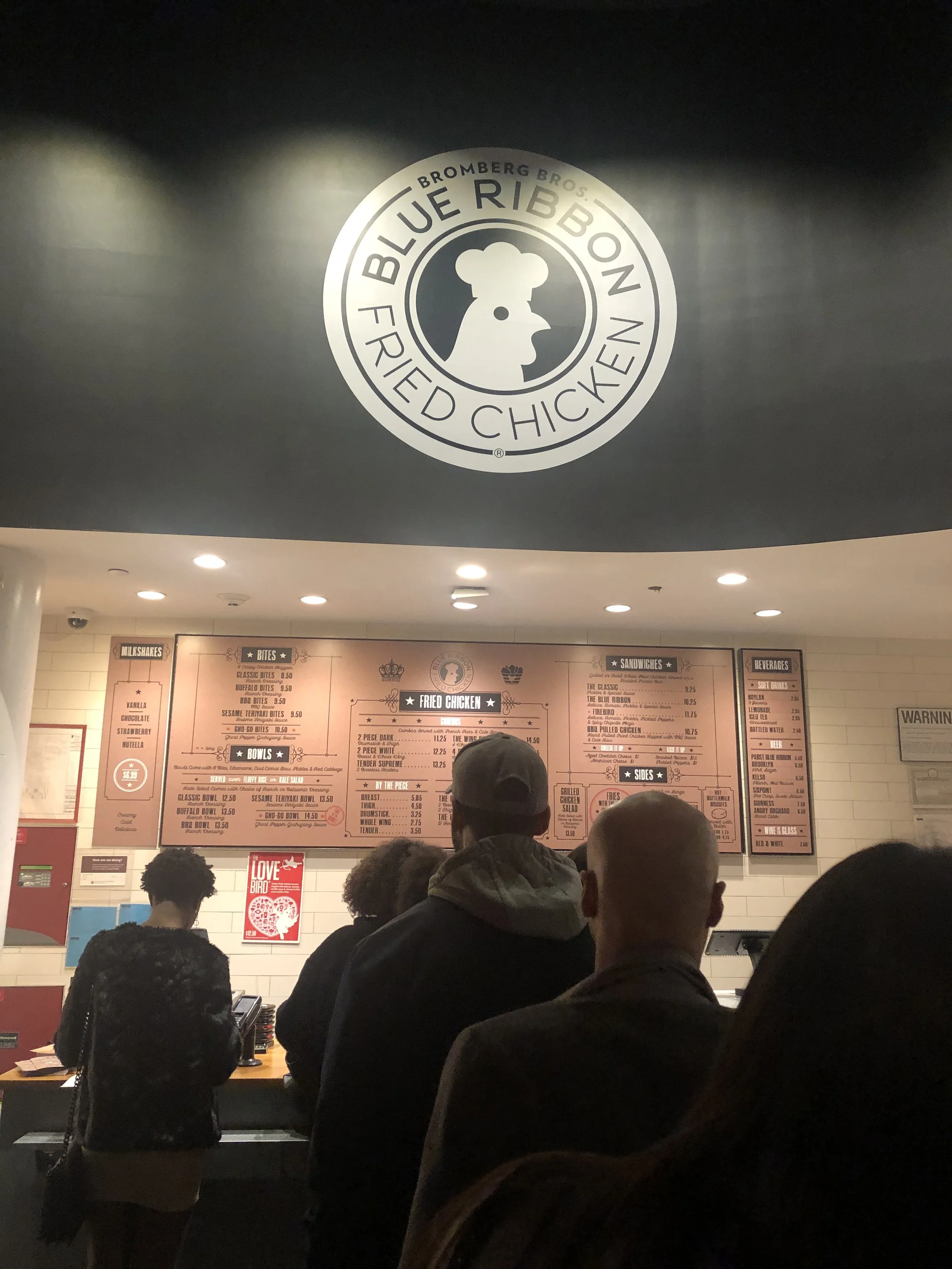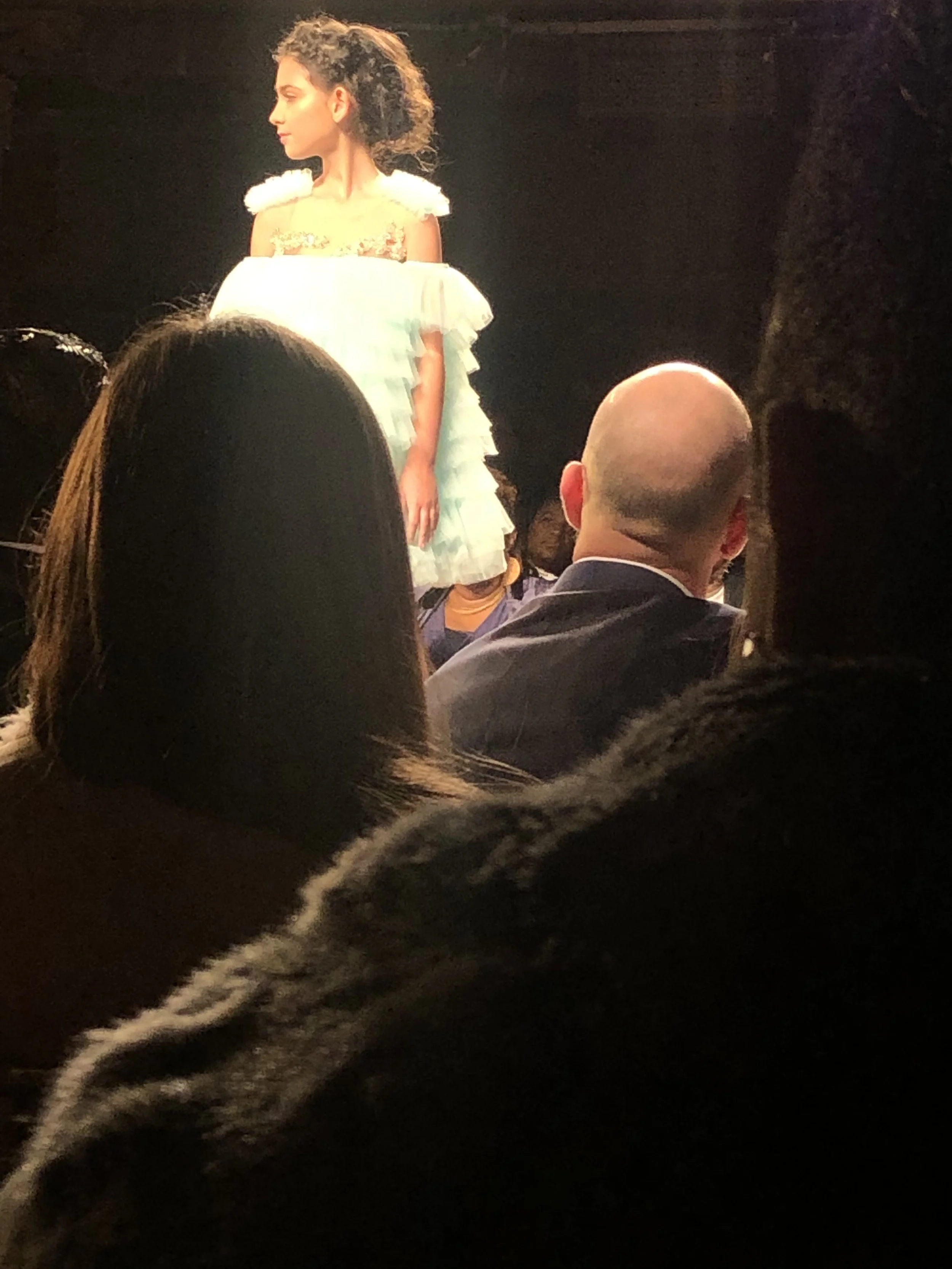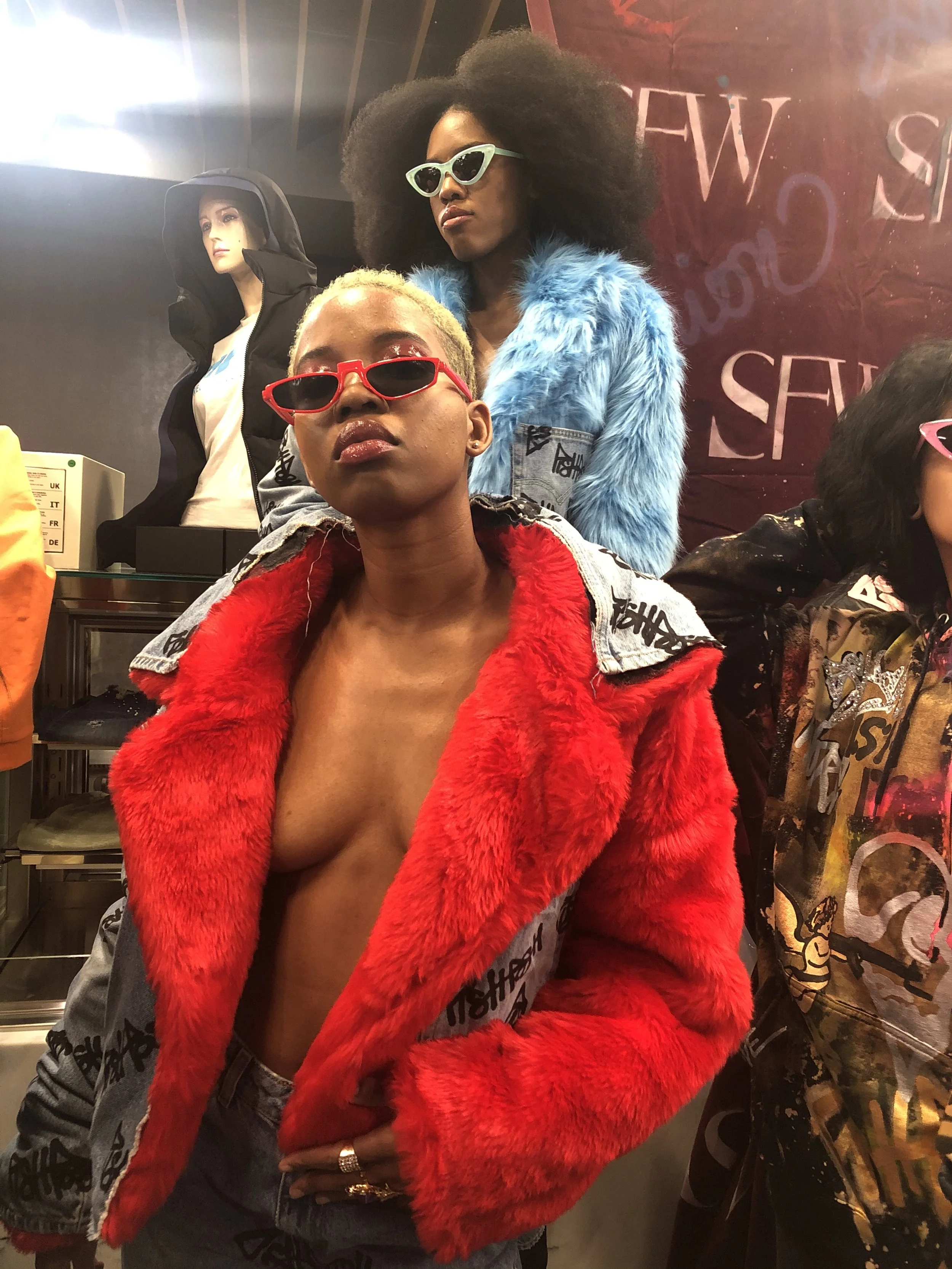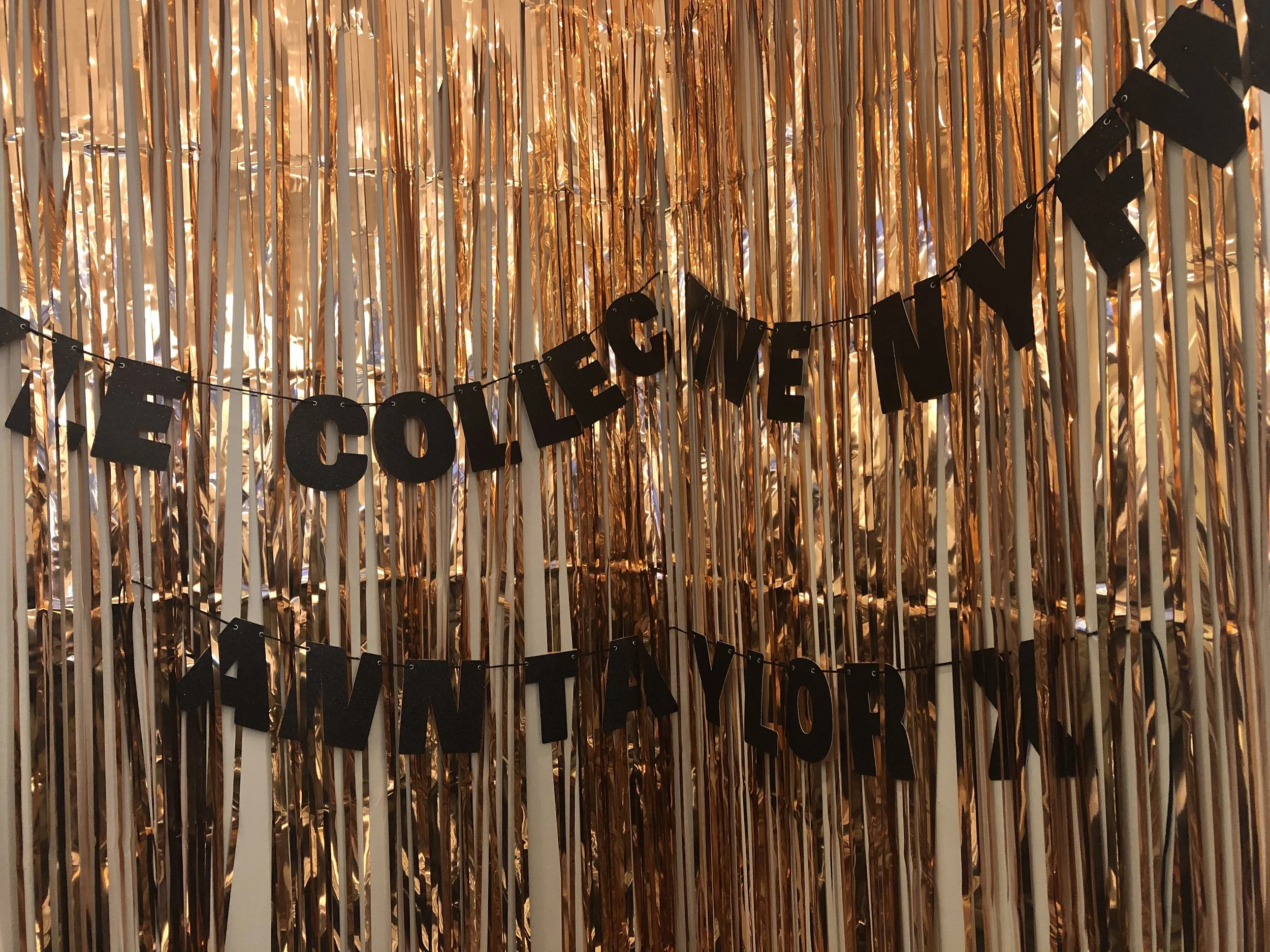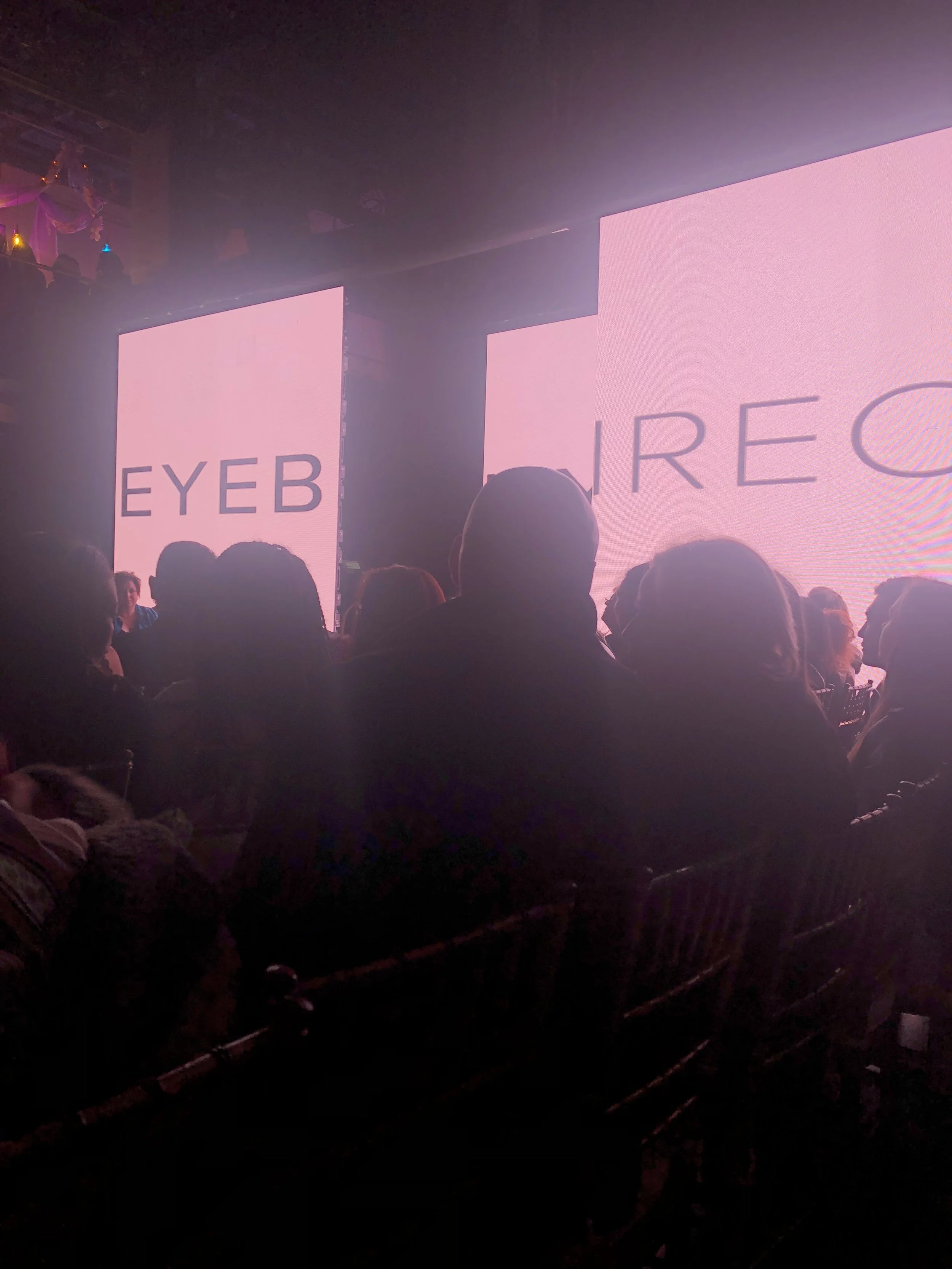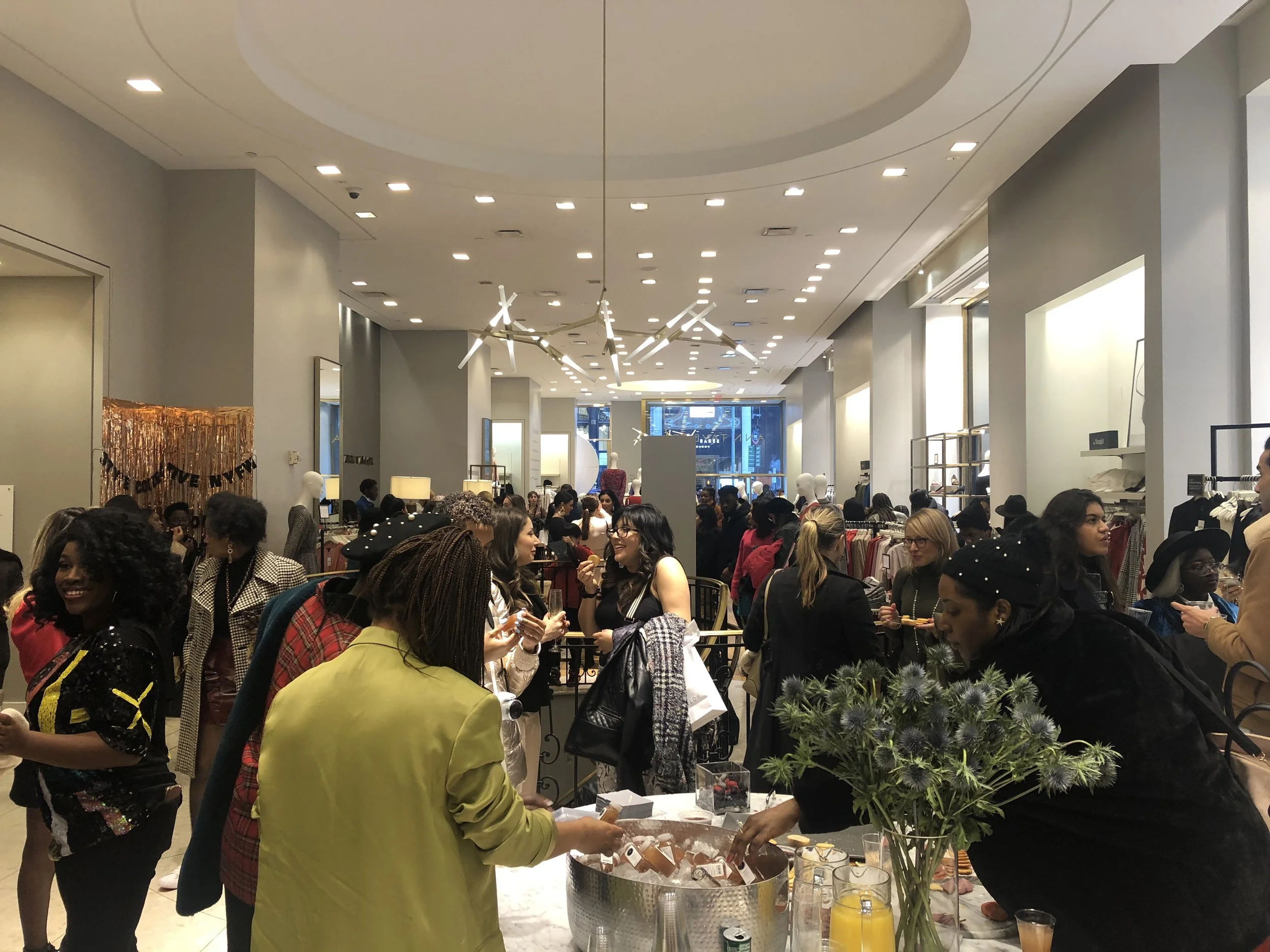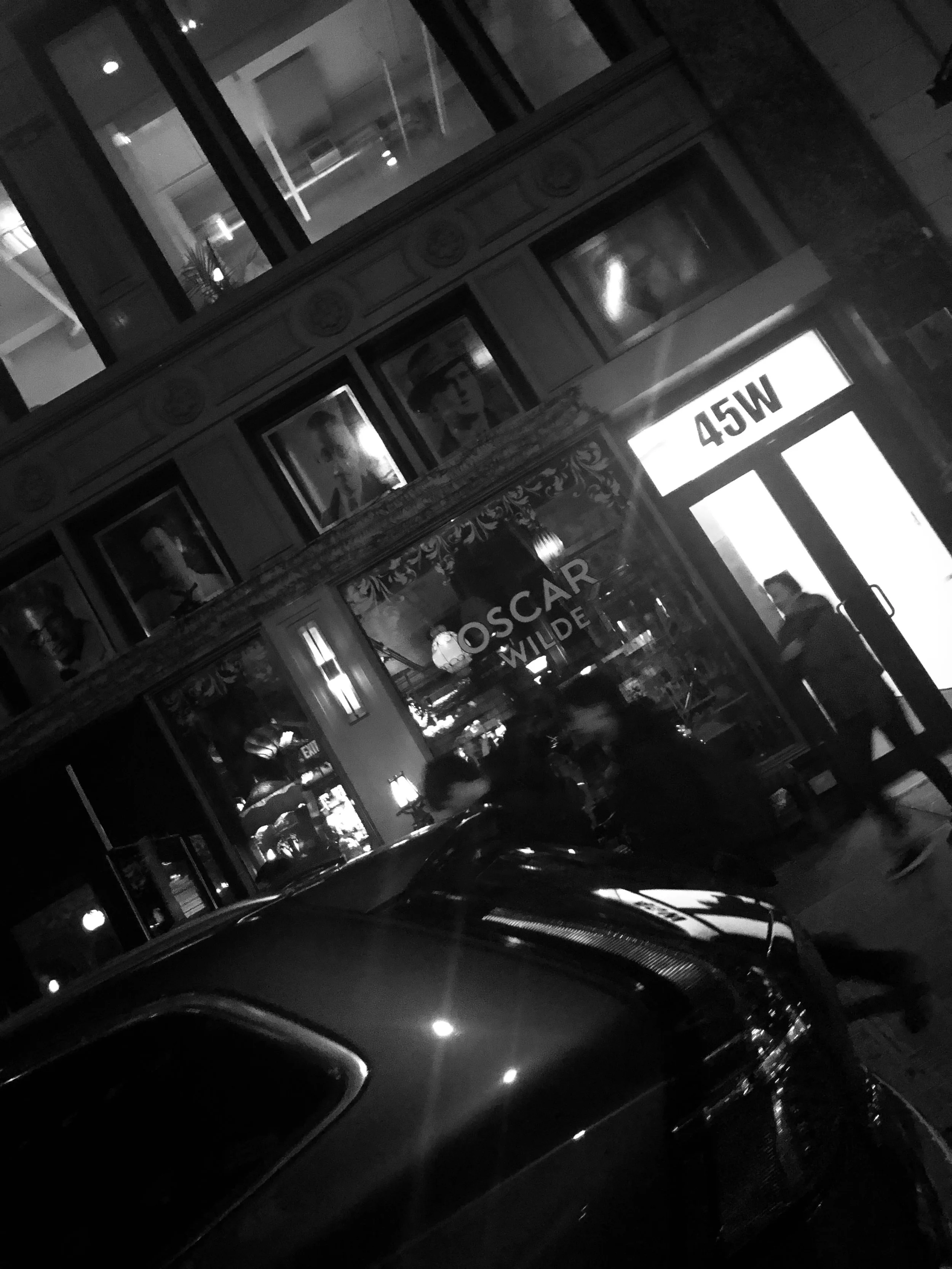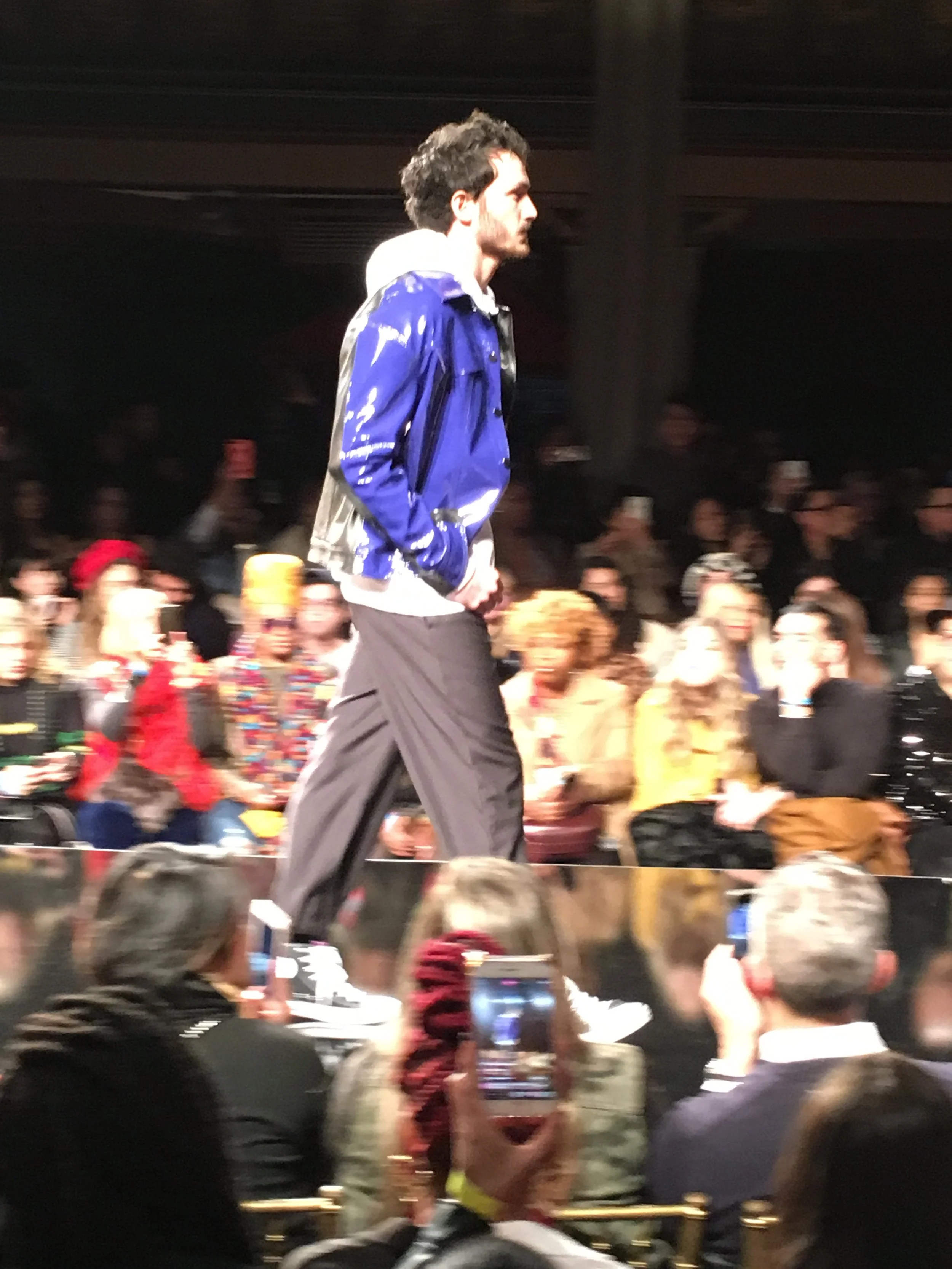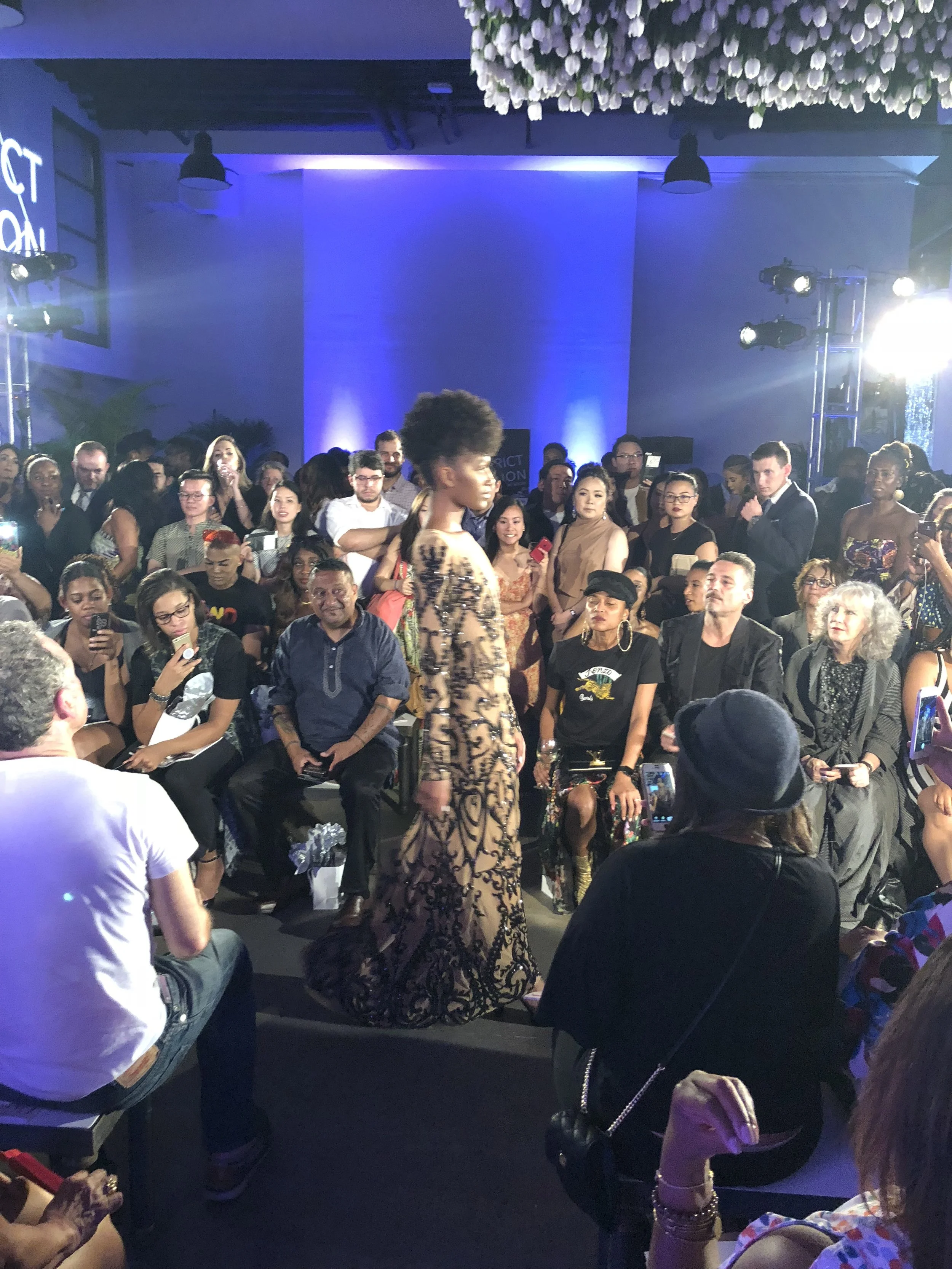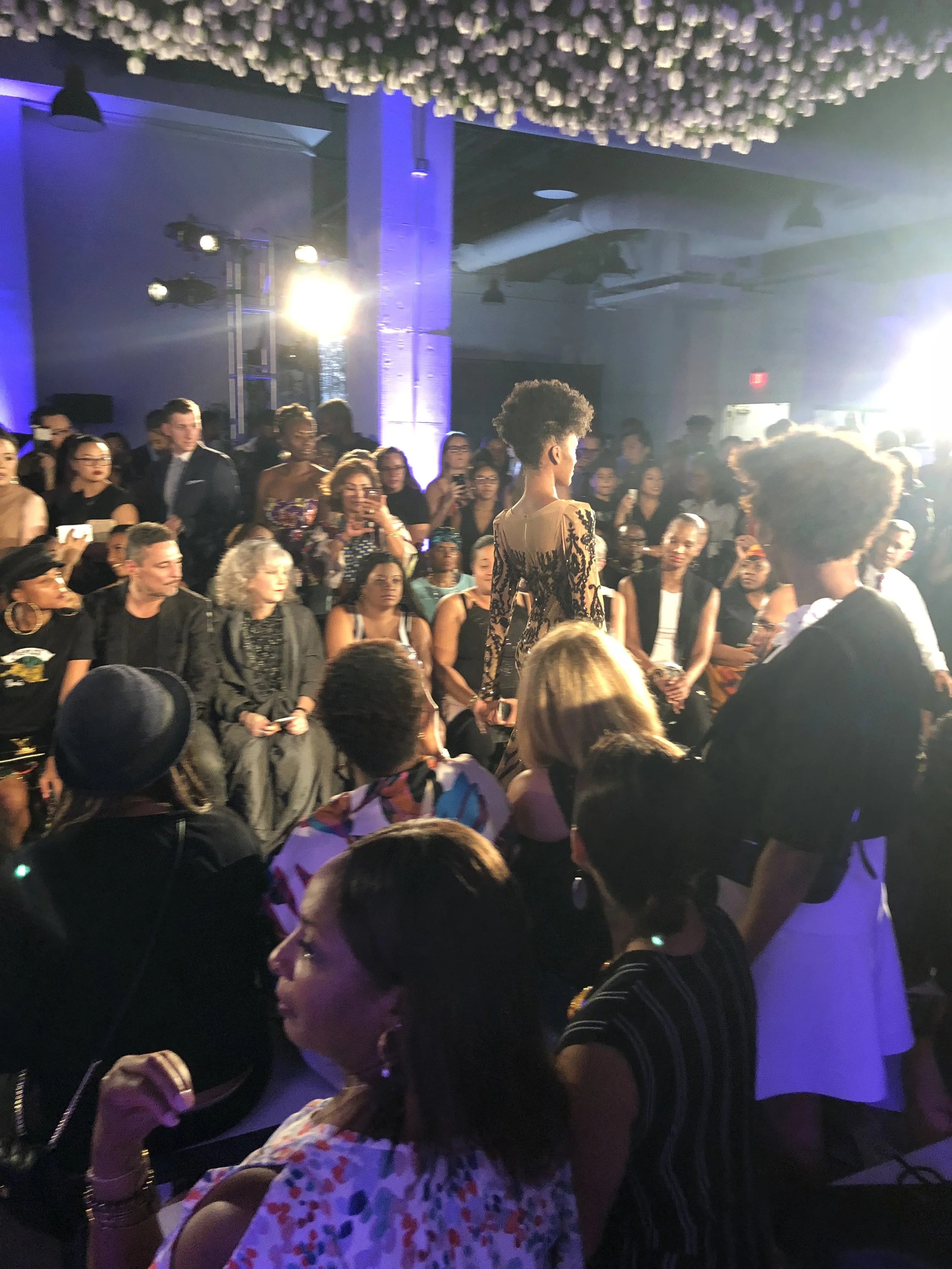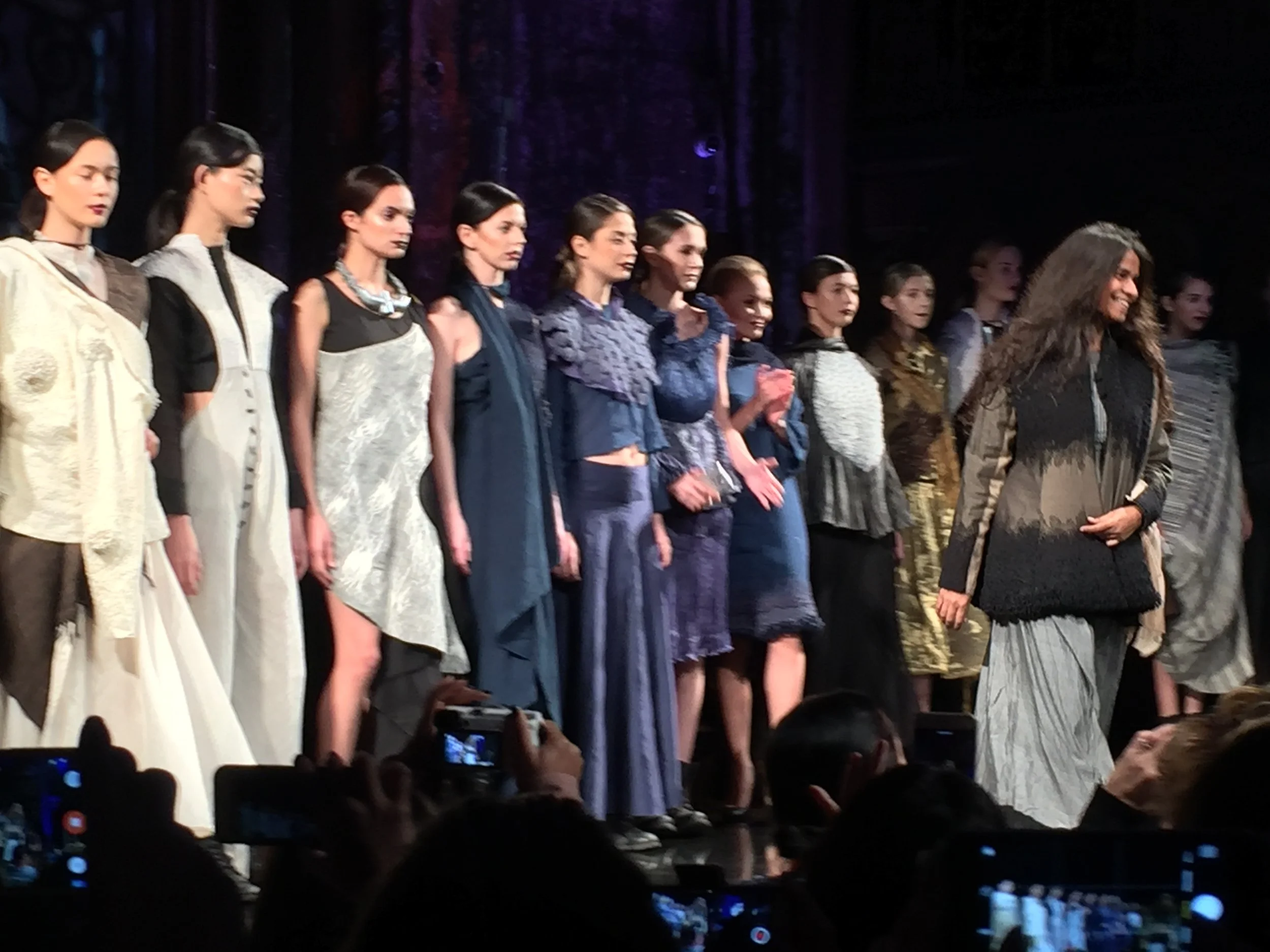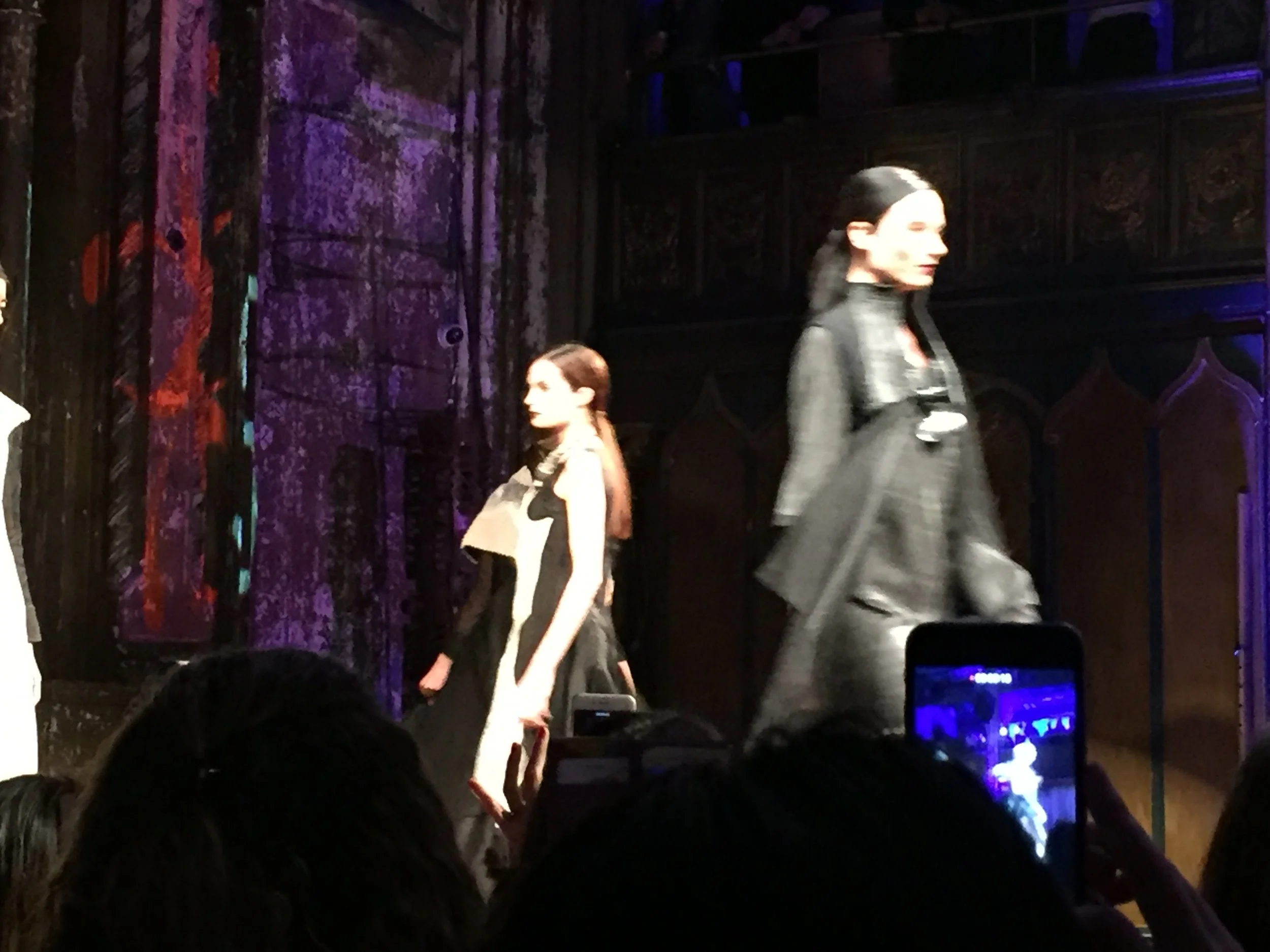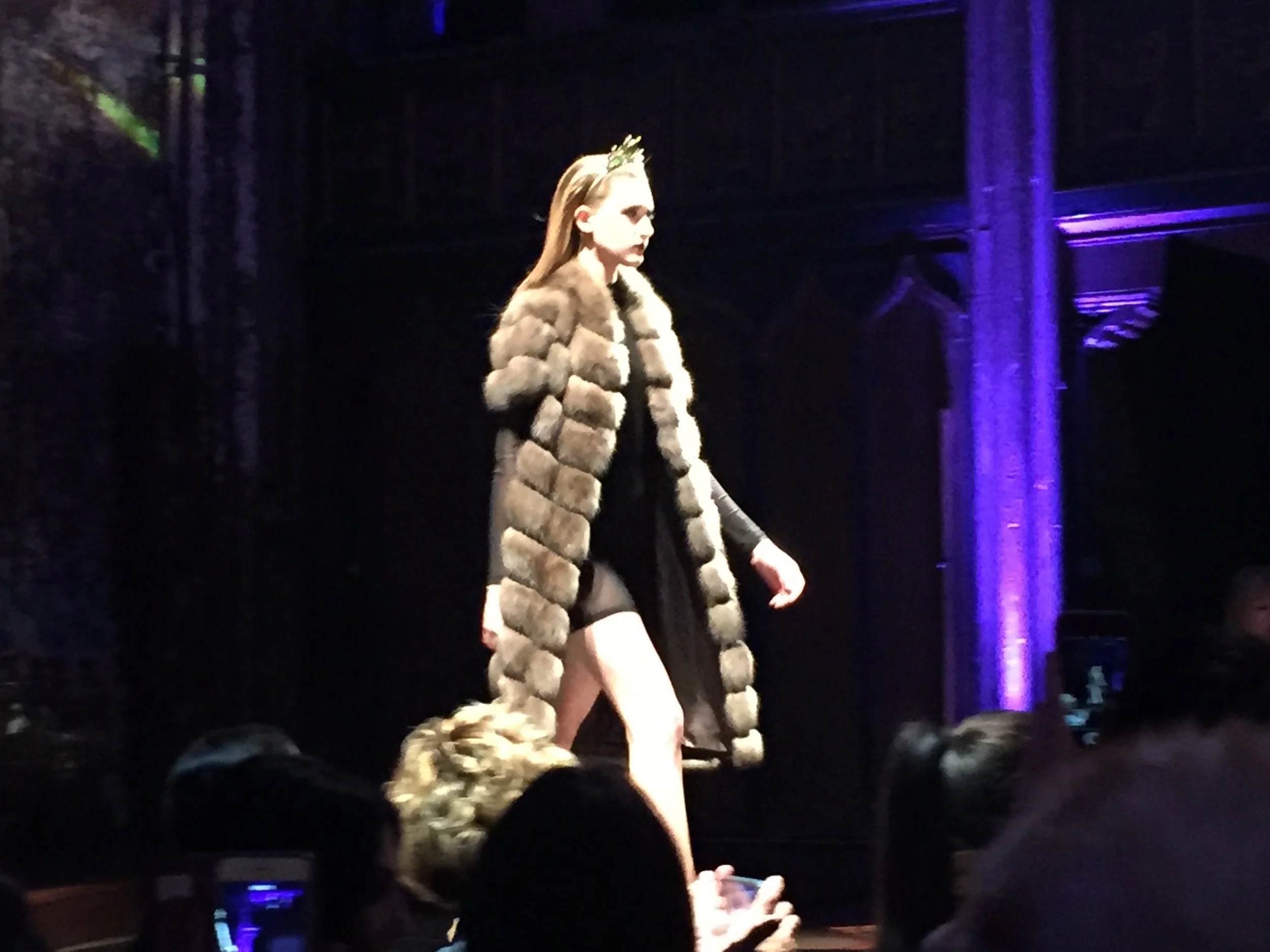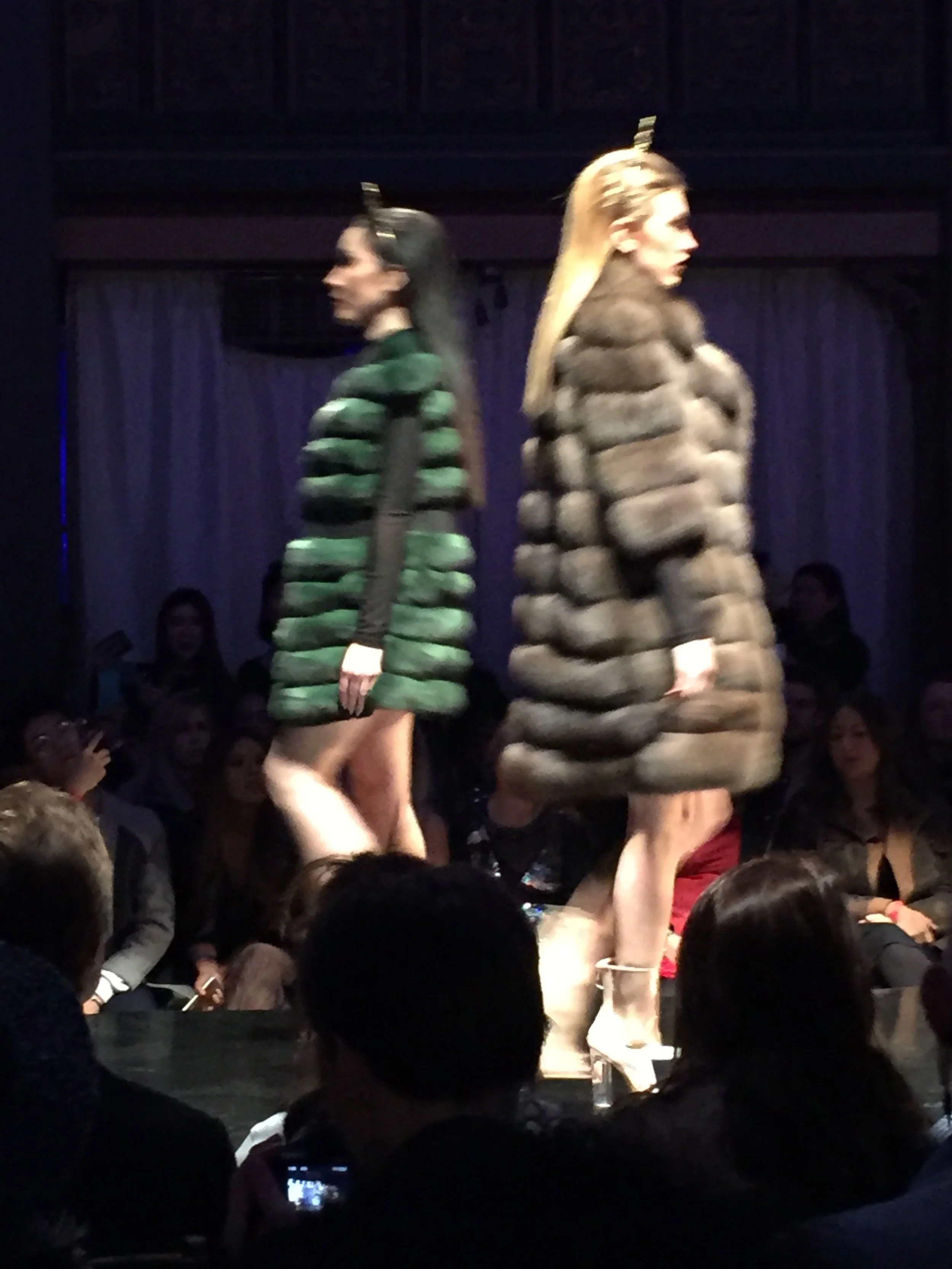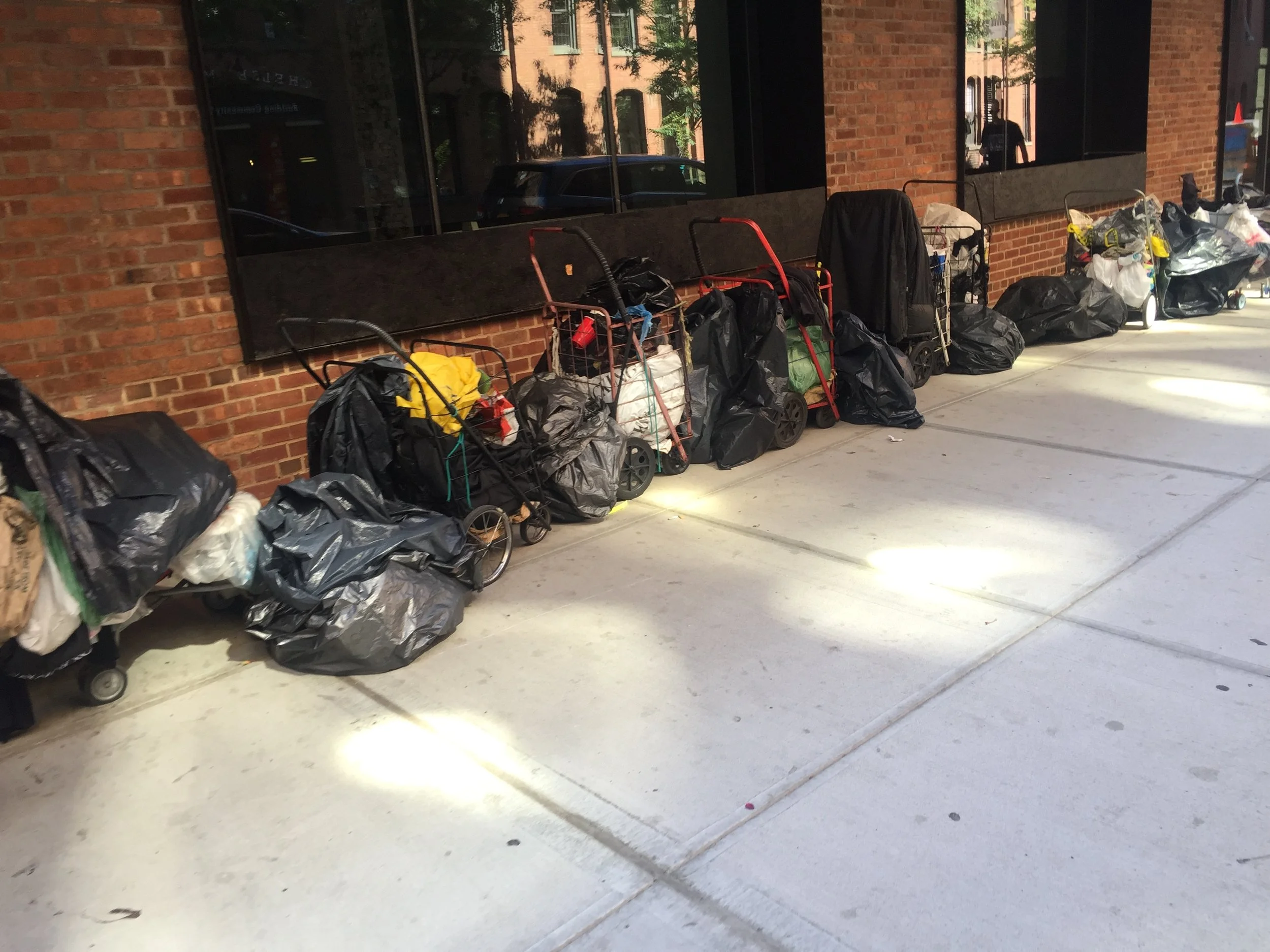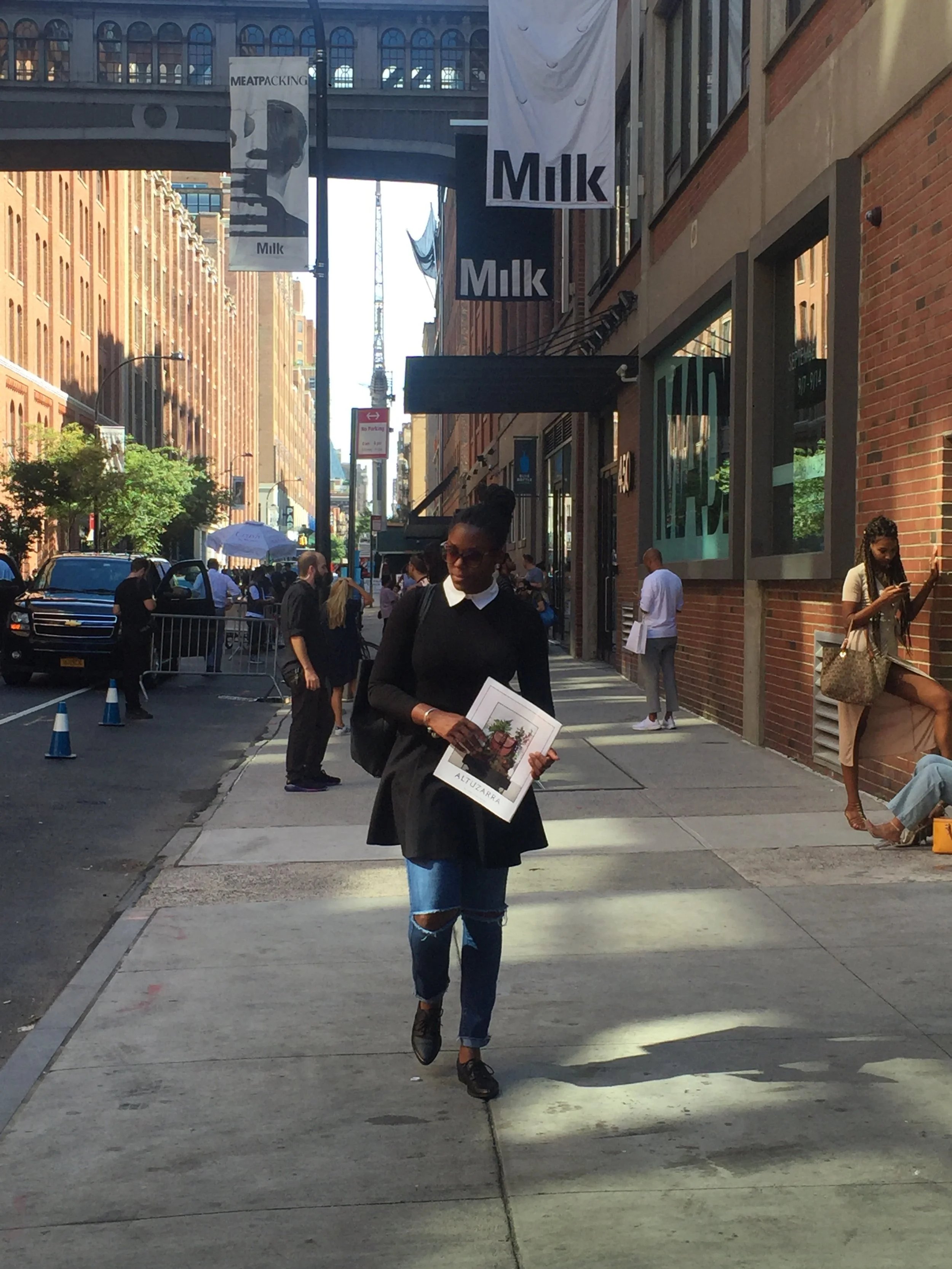BLK Style Party
On Saturday, May 3, 2025, I hosted a Black Style Party—a celebration deeply inspired by this year’s Met Gala theme: “Super Fine – Tailoring Black Style.” The theme honored the legacy and elegance of Black dandyism, and while it may have looked like a party, it was actually a curated fashion short (code for a fashion film).
Back in January, I sent detailed invitations to a select group of Black women from various walks of life, inviting them to show up as their most authentic selves. I’ll admit—the invitations were a bit wordy—but I wanted the experience to be transparent and intentional. Interestingly, many didn’t read the full details, which led to a beautiful surprise for those who attended.
The event was held in Alexandria, Virginia, with a venue capacity of just 30. I invited 25, and 15 amazing Black women showed up—exactly the right energy for the day.
There were refreshments, yes—but more importantly, there was rich, unfiltered dialogue. We talked about everything from bonnets to shapewear, colored hair, and the responsibility of being fashion-forward in a relationship.
Here are just a few highlights:
Bonnets in Public: One perspective was bonnets are for the home—akin to nightgowns—while another suggested that as bonnets evolve in style, the stigma is beginning to fade. The conclusion? It depends—on age, style, and personal values.
Shapewear Talk: Some women felt shapewear made them look larger by compressing their bodies into unnatural shapes. The recommendation? Try different brands (it may take time and money), and seek out options with plastic boning over metal for comfort. Squeem and Spanx were the top picks.
Colored Hair: Can Black women wear vibrant hair colors like blue, pink, or yellow in public? The room agreed—yes, if done with intention and style. Artist Monica was highlighted as someone who pulls it off beautifully.
Dressing Your Partner: A lively debate asked, If you're fashion-forward, is it your job to style your significant other? Half said yes—especially for public events. Others said no, or shared that their partners actually dress them. The diversity of thought was the beauty of it all.
These conversations reminded me why I hosted this event. Fashion isn’t one-size-fits-all—it’s layered, personal, and expressive. I wanted a space where women of all shapes, styles, and stories could be in one room and speak freely.
We also celebrated two beautiful Taurus queens with birthdays in early May—May 6 and May 8—and yes, they showed up and showed out!
To round out the experience, we had a line dance instructor lead a “boots-on-the-ground” tutorial (you’ll catch some of that in the short). The final conversation of the evening was one of the most impactful: What does fashion mean to you as a Black woman? For many, fashion was described as armor, freedom, and a way to self-define in a world that hasn’t always allowed it.
The night ended on an inspiring note with the first Black woman Vice Mayor of Dumfries, reminding us as black women to keep opening doors and creating black history.
All in all, it was a powerful, intimate, and stylish gathering. And—it was a phones-down event. No endless scrolling. Just real connection, conversation, and community.
Please check out the full video recap below. And if you're interested in connecting with anyone you see featured, feel free to email me directly. I’m happy to make introductions—with consent for collaboration.
BLK Style Party 2025
Dandy-ism
This May, I’m thrilled to announce the inaugural BLK Style event—the first of many to come. In celebration of Black women and the unique narrative of style they inspire, we’re not only unveiling select public sections of our site along with the event date, but also inviting you to experience a theme inspired by the 2025 Met Gala: “Superfine: Tailoring Black Style.”
Some of my male fashion counterparts were taken aback when I announced that this event would be exclusively for Black women. Yet there’s a deeper story here—a story that redefines tradition. When most think of dandyism, images of early 19th-century figures like George Bryan “Beau” Brummell often come to mind. Brummell, the epitome of masculine elegance and refined social status, was known for spending hours perfecting his look—a stark contrast to the overly ornate “macaroni” of the previous era. Historically, the English dandy—and his French counterpart, the “incroyable”—emerged in the 1790s, sporting a signature ensemble that included a felted beaver fur top hat, a crisp collar and cravat, pristine linen shorts with high-starch collars, and a tailored dress coat made from dark, high-quality fabric accented only by gilt buttons. Paired with a contrasting vest and breeches, this look was the very definition of restraint and elegance.
But dandyism is not just a tale of white, restrained refinement. Its evolution tells a much richer story—a transformation from the genteel silhouettes of Enlightenment Europe to a bold, vibrant movement of self‐expression and resistance within Black culture.
Dandyism originally emerged in the 18th and 19th centuries as a pursuit of refined elegance, epitomized by figures like Oscar Wilde. These early dandies cultivated a look of quiet confidence, marked by understated suits, minimal accessories, and an adherence to an aristocratic ideal of refinement. Yet, as history unfolded, dandyism was reimagined by those who were forced to wear identities not of their choosing. In early modern Europe, Black individuals—often referred to as “luxury slaves”—were dressed in lavish garments. Although this attire was imposed upon them, it sowed the seeds for later reclamation. These symbols of opulence, born in a system of exploitation, eventually became a canvas for resistance. Black men transformed dandyism into an act of defiance—eschewing the muted elegance of white dandies in favor of bold colors, striking patterns, and meticulous details that resonated with African diasporic heritage , .
A vital force in this sartorial transformation was the role of Black women. Often unsung, these skilled seamstresses and designers crafted the very garments that allowed Black dandies to express their individuality. Their artistry was both technical and deeply cultural—merging traditional tailoring with innovative, vibrant details to create a look that was simultaneously elegant and unmistakably distinct from the white dandy aesthetic .
The Harlem Renaissance marked a particularly transformative chapter in this evolution. Amid a cultural explosion in art, music, and literature, icons like Ma Rainey—the “Mother of the Blues”—and other Black women and lesbians embraced dandyism not merely as a fashion statement, but as a means to challenge and redefine identity. Rejecting the notion of simply imitating white aristocratic styles, these trailblazers crafted looks infused with daring colors, elaborate patterns, and culturally resonant details. Their style was an overt statement: while they aspired to the high standards of dandyism—exuding class, refinement, and impeccable taste—they consciously chose to celebrate their heritage and individuality in ways that defied convention .
The contrast is striking. Traditional white dandyism relied on a restrained elegance—a single, well-tailored suit, subtle accessories, and a uniformity that evoked genteel tradition. Black dandyism, in contrast, has always been about breaking the mold. It’s a dynamic, vibrant approach where every element—be it a brightly colored Ankara jacket or an unexpected detail in the tailoring—serves as a statement of unique identity and resistance against the status quo. Black dandies have never sought to mimic white standards; instead, they’ve appropriated the language of high fashion and reinterpreted it through a lens of cultural pride, resilience, and innovation.
Today’s BLK Style event is a tribute to this transformative journey. It celebrates not only the evolution of dandyism but also the distinct stylistic differences that define Black expression. By blending historical influences with modern flair, we honor a legacy that has long been about more than just dressing well—it’s about making a powerful statement of social commentary and personal liberation.
Join me as we redefine tradition, celebrate our heritage, and embrace a future where style is a bold declaration of identity.
More:
The 2025 Met Gala is co-chaired by A$AP Rocky, Pharrell Williams, Colman Domingo, and Lewis Hamilton. I'll make sure to include these names, mentioning that this year's theme "Superfine: Tailoring Black Style" marks a historical focus on menswear, the first time since 2003 when the theme "Men in Skirts" was featured.
-Tempestt
FEBRUARY FASHION WEEK |NYC
Fashion Week February 2025 proved to be bittersweet. What once was a mental retreat—a time when I could lose myself in cool street fashion and runway shows—has slowly morphed into a scripted drama. Models, influencers, and their hired photographers now do everything imaginable to capture the perfect social media shot. Over the past three years, I have increasingly found myself wondering why I attend New York Fashion Week. Beyond networking and promoting my business and sharing the gospel of slow, circular fashion under the sustainable fashion umbrella, I began to question the true purpose of these events. Is it even networking anymore when social climbing has become the ultimate goal, and when one’s number of social media followers seems to determine business opportunities?
A reality check came when, this time, I attended with my husband and children. I found more joy in spending time with them in the city and visiting family in Manhattan than in the hustle of the event itself. I also cherished my hotel stay. Although I usually stay in the Garment District—which has undoubtedly changed since the pandemic—the essence of the area still resonates. I was captivated by the view from my hotel: my window overlooked a garment building where several dedicated garment workers, both women and men, were immersed in their craft. While others might have missed a city view, I loved every minute, even admiring the building’s pitch-black facade when the lights went off after everyone had left for the day.
Shifting focus to the fashion on the streets, it was clear that the baggy, oversized silhouettes of the ‘90s remain highly influential. I noticed an abundance of layered sportswear paired with baseball caps, and in terms of footwear, Adidas sneakers were everywhere. However, the stark contrast between men and women on the runway was striking. Men appeared more tailored and put together, whereas the women presented a more anti-fashion vibe. It felt as if women were rebelling against consumerism by blending elements of high fashion, designer pieces, vintage items, and streetwear—creating a look that was both eclectic and, at times, chaotic. Thankfully, I did not encounter any PVC, which was a relief.
If nothing changes, Fashion Week as we know it might soon become unrecognizable. I definitely miss the days when Lincoln Center was the destination for NYFW; the current settings at the piers and "sidecar" locations feel frantic and soulless. On a positive note, however, there was a strong trend toward suiting separates—particularly suiting jackets and the “power lesbian” look—which emerged as a runway objective for many designers. These tailored jackets and soft, layered outerwear pieces are perfectly timed, as this year’s Met Gala theme, “Superfine: Tailoring Black Style,” is all about exploring the history of tailoring in culture, especially within Black style. The Met’s curation will showcase the Black dandy figure from the 18th century through to modern-day depictions in fashion and film. Notably, this is the first time since the 2003 “Men In Skirts” theme that the Met Costume Institute has focused solely on menswear. According to Vogue, the exhibition will illustrate how Black people transformed from being enslaved and objectified as luxury items to becoming autonomous, self-fashioning individuals and global trendsetters. Ughh,…Legendary Vogue fashion editor André Leon Talley would have loved this theme.
Overall, the trip was fun, and spending time with my family made it all the more memorable.
-Tempestt
Random thoughts: Fashion's Evolution
From NYFW to Sustainable Style: My Journey Through Fashion's Evolution
Since 2013, I’ve been attending New York Fashion Week (NYFW). You can check out my very first blog post for a full recap of that experience—or simply as proof. After all, everyone “in fashion” claims they’ve attended NYFW, but let’s be honest: not everyone actually does.
For me, it wasn’t until September 2016’s NYFW that I had a pivotal realization about my career. As I sat watching the shows, immersed in the glamour and chaos, I began to feel a pull toward something deeper. I wanted to leave a more meaningful impact on the world, something beyond just creating designs or following fleeting trends. That moment planted the seed for the career transformation most of you know about today—I committed myself to a more sustainable approach to fashion and design.
Fast forward to this year, on Saturday, June 22, 2024, when I hosted the second annual edition of my sustainable fashion show. Despite the summer heat, the event was only four tickets shy of selling out completely! Attendees were engaged and eager to learn about sustainable fashion and circular economy concepts. Every piece showcased during the show was secondhand, and each model represented diverse and unique body types, proving that sustainable fashion is not only responsible but inclusive.
This journey has taught me that sustainability is about innovation, creativity, and a deeper connection to the pieces we choose to wear. I’ve also been working on some major revamp projects that I hope will bring my mission full circle—literally and figuratively. These initiatives focus on breathing new life into overlooked or outdated designs, ensuring they can seamlessly transition into modern wardrobes.
Rethinking Luxury in a Circular Economy
I once heard a quote that said, “You can’t sell luxury unless you live a luxury lifestyle.” While the theory makes sense—how can you truly sell something you’ve never experienced?—there’s something inherently contradictory about this idea in the context of fashion. Sustainable fashion, in particular, challenges the traditional notions of luxury. In my eyes, sustainability can be every bit as luxurious as traditional high fashion, especially when we’re discussing authentic designer goods or reimagined pieces through upcycling.
Take revamped or upcycled designs, for example. They hold a unique allure: a balance of exclusivity and creativity. I’ve been fascinated by Zuhair Murad for the past two years. His designs are regal and striking, exuding that “new money” confidence. And to me, that’s fabulous—new money is daring, bold, and refreshingly unapologetic. Just look at Wes Gordon’s modern, feminine reinvention of Carolina Herrera or LaQuan Smith’s sultry redefinition of the female silhouette. These are designers unafraid to take risks.
But here’s my question: Why can’t these renowned houses also hire “revamp designers”? Imagine a team dedicated to reimagining and repurposing headstock, less desirable or unsold designs, transforming them into timeless, versatile pieces. This approach could significantly reduce waste and extend the lifecycle of fashion items in a meaningful way.
The Cost of Fast Fashion and Social Media’s Role
As social media continues to influence consumer behavior, were seeing clothing wasted at an alarming rate. The numbers are staggering, and it’s a call to action for the entire industry.
What if we embraced a return to a more traditional fashion cycle? A system where quality and craftsmanship take precedence over speed and trendiness? Maybe then Fashion Week would feel less “fake famous” and more genuinely glamorous again. It’s a romantic idea, but perhaps it’s also a necessary one. After all, isn’t the essence of fashion about creating beauty that lasts?
This was the marketing for the summer 2024 Fashion Show. I wanted to keep it simple but direct.
My second sustainable fashion show - thrift store clothing only! I was so pregnant,…
The Vintage chanel
Have you noticed the flurry of social media posts and IG stories discussing the current state of Chanel Bags? What was once a cornerstone of designer fashion, regardless of your personal style preferences, has now found itself under the scrutiny of public opinion.
Now, don't misunderstand me, I still hold Chanel in high regard, but its value, in my professional estimation, is increasingly tied to its production date. Vintage bags, in my view, hold more worth due to the superior materials likely used in their creation—materials that were perhaps less genetically modified, synthetic, or blended with cheaper alternatives to cut production costs.
Ironically, I use the term "vintage" loosely here, as it traditionally denotes items at least 20 years old, though the exact timeframe can vary. Within the industry, we distinguish antique as fashion over 100 years old, vintage as at least 20 years old but less than 100, and contemporary as styles from the recent past (less than 20 years old)—think fast fashion.
Simply put, vintage refers to clothing, accessories, or styles from past eras that have regained popularity or are valued for their historical significance and craftsmanship. Items from the 1920s to the 1990s might fit this definition, depending on various factors.
However, it's crucial to recognize that the notion of "vintage" is subjective, varying among collectors, historians, and enthusiasts. Some may consider items from the 2000s as vintage as time progresses and those styles diverge further from contemporary fashion.
Personally, as a former enthusiast of Mugler and their innovative direction, I found the H&M collaboration to be a blow to the house's integrity. To elaborate, I recall a style scout from WGSN once stating that luxury should not be affordable; otherwise, it loses its essence. This is why the phrase "affordable luxury" makes me cringe—it often masks the reality of discounted or overpriced goods or services under the guise of accessibility. To put it bluntly, it's akin to the distinction between an escort and a prostitute; both offer similar services, but one is marketed as "affordable," which can be misleading.
Following the Mugler collaboration on May 11, 2023, my perspective on fashion—already wavering before the pandemic—shifted towards a more utilitarian aesthetic, focusing on necessity rather than extravagance. This approach has simplified my life, both in styling clients for specific events and curating my personal wardrobe based on desired emotions rather than merely visual impact. It's a universal truth that when you love what you wear, you exude confidence, and it becomes a part of you. Conversely, if you're not truly sold on your look, encountering someone more "put together" can chip away at your confidence.
Currently, my preferred fashion houses for distinctive yet personalized looks include Pucci (the print), Versace (the woman), and especially Schiaparelli (the story). Schiaparelli, in particular, has exceeded expectations appealing to those with a love for modern art and surrealism.
-Tempestt
"Fashion is merely an interpretation of time."
- Virgil Abloh
The Illusion of Affordable Luxury
In a world where luxury seems increasingly accessible, the very essence of what luxury represents is being diluted. The allure of luxury lies in its exclusivity, its ability to distinguish itself from the ordinary, the mundane. Yet, the concept of "affordable luxury" attempts to bridge the gap between opulence and accessibility, blurring the lines of distinction.
Luxury fashion is not just about owning expensive items; it's about embodying a lifestyle, a status, a sense of privilege that sets one apart from the masses. From 2022 to 2023, the luxury fashion market has seen unprecedented growth, with sales soaring despite global economic uncertainties. According to a report by Bain & Company, the global luxury market rebounded strongly in 2021, with a projected growth of 12% to 14% from 2022 to 2025. [Source: [Bain & Company Luxury Market Report]
True luxury fashion brands understand this distinction, crafting meticulously designed pieces that epitomize sophistication and exclusivity. However, the rise of "affordable luxury" brands caters to a demographic that aspires to the trappings of luxury without the price tag. These brands capitalize on the psychological appeal of owning luxury items, offering a semblance of exclusivity at a fraction of the cost.
But can true luxury ever be truly affordable? The very essence of luxury lies in its scarcity, its unattainability to the masses. The resale market, on the other hand, offers a compromise. It provides access to coveted designer pieces at a reduced price, allowing individuals to indulge in luxury without the exorbitant cost. Even those who can afford luxury items may opt for vintage pieces, appreciating the history and uniqueness they embody.
For me, the distinction lies in curated collections of designer pieces that align more with the luxury resale market than with mass-produced "affordable luxury" brands. It's about cherishing quality over quantity, investing in pieces that transcend trends and retain their value over time.
In conclusion, the notion of affordable luxury in fashion is a paradox—a contradiction in terms. True luxury cannot be mass-produced or commodified; it is an experience, a lifestyle, a statement of individuality. As consumers, we must redefine our understanding of luxury, valuing craftsmanship, heritage, and exclusivity over accessibility and affordability.
FEBRUARY FASHION WEEK |NYC
Fashion Week February 2024: A Unique Experience
This past Fashion Week was a whirlwind that left an indelible mark on my fashion journey. As always, I eagerly made my way to New York City, but this time, I chose a different mode of transportation—the Jet Bus. Let me tell you, the ride was a refreshing departure from the cramped commutes of the past. Arriving amidst the city lights, honking cars, and towering billboards, I couldn't help but feel a surge of excitement reminiscent of flying into Vegas, where the energy is palpable from the moment you touch down. I hadn’t been to New York for Fashion Week since 2019 because of the pandemic, but I digress...
One standout moment was my stay at the Hendrix Hotel in the Garment District. Its modest animal print decor and spacious bathroom was a pleasant NYC surprise. Although I must confess, the absence of a wall mirror in my room caught me off guard when it was time to gear up for my first show. I was slightly annoyed but made do.
Navigating Fashion Week post-pandemic provided its own set of challenges. A late-night quest for a simple dinner revealed a quieter city, with many establishments closing earlier than expected. We’re talking 10:30 pm! The streets felt emptier, and the once-thriving restaurants were noticeably quieter—a stark reminder of the toll the pandemic had taken on urban life. Despite our best efforts, finding a late-night meal turned into a hard stop, with only the golden arches offering sustenance amidst our Greenwich and Chelsea wanderings. Needless to say, I would’ve gone to bed hungry if it weren’t for my chips in the hotel room.
As for the fashion shows, they offered a mixed bag of emotions and experiences. Attending seven shows, including showroom presentations and runways, allowed me to witness firsthand the resilience and creativity of the industry. Among them, one designer left an indelible impression: Mondo from Project Runway. His journey from reality TV to fashion stardom exemplifies courage and innovation. He’s only one of three designers from Project Runway that I can name who’ve had notable success outside of the show.
However, amidst the “glitz and glamour” of Fashion Week, the street style scene felt somewhat lackluster. An influx of influencers posing perilously close to oncoming traffic for the perfect shot highlighted a shift towards manufactured moments over genuine expression. It was a stark departure from the authentic street style moments I had come to cherish, leaving me wondering whether social media has become a catalyst for creative theft rather than inspiration.
Gathering with my friend on our final night, we couldn't help but reflect on the evolution of Fashion Week and its impact on our spirits. The magic of previous years seemed elusive, replaced by a sense of disillusionment and detachment. Has Fashion Week lost its soul amidst the chaos of social media and commercialization? It's a question I continue to grapple with as I navigate the ever-changing landscape of the industry.
In the end, Fashion Week February 2024 served as a poignant reminder of the resilience and adaptability of the fashion world. While challenges persist, so too does the unwavering passion and creativity that drive us forward. Perhaps the industry is still finding its footing in the wake of the pandemic, or as it fights fast fashion's grip, but one thing remains certain: the spirit of innovation and expression will always shine on the runway. Only time will tell where the future of Fashion Week leads us, but one thing is for certain—I'll be there, ready to embrace whatever comes next.
-Tempestt
NYFW Feb 2024
NYFW Feb 2024
NYFW Feb 2024
The Ann Lowe Exhibit
Yesterday, my family and I visited the Ann Lowe exhibit at Winterthur Museum, where we had the opportunity to view over 40 of her iconic dresses spanning her entire career. While I first encountered her name in a brief session on black couturiers in American history during my undergrad years, it wasn't until September 2020 that I delved deeper into this fascinating woman.
During a Zoom call for New York Fashion Week, Andre Leon Talley, the keynote speaker. He illuminated Ann Lowe in the most inspirational way. He portrayed her as an unsung couture figure in American history, sparking my curiosity to delve further into the life of this remarkable woman.
Born Ann Cole Lowe on December 14, 1898, in Clayton, Alabama, she emerged as a trailblazing African American fashion designer, inheriting her skills from a family of adept seamstresses, most notably her grandmother, Georgia Cole. Her journey took her through design schools in New York City, including the S.T. Taylor Design School and the Fashion Academy, laying the foundation for a groundbreaking career.
Lowe's legacy includes crafting Jacqueline Bouvier's (Kennedy) iconic wedding dress in 1953, a testament to her exceptional talent. She shattered racial barriers in the fashion industry, earning recognition among elite clientele and accolades from the Couturier's Guild of America in 1962. Renowned for her exquisite craftsmanship and signature style, characterized by delicate fabrics, intricate beading, and lace, Lowe's influence on bridal and eveningwear continues to inspire designers today.
Despite her success, Lowe faced financial challenges in her later years, prompting her retirement in 1972 at the age of 71. She also had two unsuccessful marriages, as both husbands wanted her to spend less time sewing and more time being a wife. In a 1966 interview with Ebony magazine, she reflected, "All the pleasure I have had, I owe to my sewing." Living with her adopted daughter Ruth, Lowe battled a prolonged, undisclosed illness until her passing on February 25, 1981, in Queens, New York.
Ann Lowe's enduring impact on the fashion world, particularly in bridal and eveningwear, is undeniable. Her story serves as a poignant reminder of the resilience and talent of African American designers in the face of adversity.
September Fashion Week |VA
This September, I had the privilege of curating and hosting my inaugural sustainable fashion show. My initial vision painted a picture of a grand, airy venue, with lofty ceilings, pristine white walls serving as the perfect canvas for showcasing exquisite clothing, sleek yet non-slippery floors for models to strut, and an unforgettable cocktail hour. However, reality took a different turn.
Instead, we found ourselves in a rustic lodge that demanded a touch of imagination and tender care to transform it into a stunning fashion event. The entire space underwent a creative overhaul to conceal the imperfections that often accompany older buildings. The floors underwent rigorous scrubbing until they showed signs of luster, while the kitchen received an intensive deep cleaning. The result? Perfection.
This event marked the perfect initiation into the world of sustainable fashion shows. Even though every facet of it strayed far from my initial imaginings, it unfolded precisely as it was meant to, leaving me without a single regret.
What this entire experience taught me, in a most profound way, was that the toxic pursuit of perfection can often stifle the birth of great ideas. Four potential venues turned me down for a variety of reasons, some delivered politely while others not so much. But one rejection couldn't extinguish the fire of our determination.
What made this journey even more remarkable was witnessing how the models gracefully and professionally weathered every obstacle thrown their way. Their resilience was nothing short of inspiring. And then there were the guests, their faces lighting up with astonishment as they beheld the magical transformation of the space. Watching people revel in wholesome fun, laughter, and smiles was the true measure of the night's success.
From the torrential rain that pounded outside to the joyous camaraderie that permeated every corner, it was an evening truly blessed. So much so that I found myself fielding a question that surprised me: "Will you do this every six months?"
The moral of the story? It may not always unfold exactly as you envision, but in the end, it will become what it's meant to be.
Diane von Fürstenberg |Live
I recently had the opportunity to participate in a live Zoom webinar featuring Diane von Fürstenberg, the renowned Belgian fashion designer celebrated for her iconic wrap dresses. Despite my familiarity with her from previous interviews, my curiosity was piqued about how the pandemic had influenced her business and personal life. I was eager to learn more about her interactions with buyers and any shifts she had made in her sustainability initiatives in response to industry scrutiny.
During the interview, I was captivated by Diane von Fürstenberg's approach to the pandemic, which she had used as a catalyst for introspection and a deeper focus on personal relationships. Her emphasis on the significance of relationships in both our personal and professional spheres provided a refreshing perspective, especially in the fashion industry, where commercial aspects often take center stage. While I hold great admiration for André Leon Talley and his profound insights into the fashion business, von Fürstenberg's emphasis on relationships served as a poignant reminder of the human connections that underpin the success of all endeavors, whether personal or professional.
Fashion Note.21
Fast fashion is a shady business that operates underneath the veil of cheap clothes.
Fast fashion has a business structure designed to minimize time and costs. It is a copy-and-paste formula designed to maximize profits. Such practices make it impossible to create original garments. Representatives, known as scouts, go undercover to various design houses to buy popular items to take to their company and "adapt" for their customers. Adaptation is another word for copying into a low-cost option with minimal differentiation.
Fast Fashion brands often claim it's difficult to follow fashion trends without copying them. However, Zara has been sued for plagiarism multiple times. After years of litigation, Rains won an infringement case against Zara in a Danish court over two signature designs. Despite this, the fast fashion industry remains unshaken.
Hardly surprising given that more than half of all posts on social media platforms such as Instagram are related to fashion and beauty. Clothes have become a significant part of people's identity. Manufacturers study our minds to learn how to target us through pricing. We tend to consume more when prices are low, and collections are "limited." As a result, companies are abandoning traditional marketing campaigns and focusing more on influencers to sell their products.
The textile industry is the second-largest polluter in the world after oil. The more commerce there is, the more pollution there is, especially without efficient water waste filtration and cleanup technology. Under pressure, the textile industry is trying to change by embracing green fashion. However, this is often a mass-market trend to convince consumers they are buying organic and sustainable by purchasing garments made from viscose, cheap artificial silk.
In truth, viscose is wood. The process of transforming wood into fabric requires large amounts of chemicals, including CS2, which is known to cause eye diseases, infertility, and other vascular problems.
Fibers used to make fast fashion garments are produced to break down quickly, resulting in clothes that become worn and unusable- in a short time. Some fast fashion items are so cheap that they cannot be sold secondhand and are either burned or end up in a landfill.
And so it goes.
The Black Female Dandy
Has Black Female Dandyism become a thing of the past?
As fashion trends move towards provocative styles reminiscent of the topless 1960s and the logo-heavy 1990s, the meticulously groomed woman seems to have lost her place.
Dandyism originated in the 1700s with Beau Brummell and evolved over the years. Currently, Dandism is all about sartorial finesse. However, black female dandyism draws inspiration from the refined style of influential black men during the Edwardian era, characterized by perfect tailoring and fit, minus the use of frills, lace, or other embellishments.
Despite cultural changes, the black female dandy is now an invisible voice in mainstream fashion. It could be intentional, as dandyism is not a passing fashion trend; but a way of life for those who revel in details. Nevertheless, the question persists: where have all the Dandy Lions gone?
André Leon Talley |Live
Fashion Week, is it canceled?
During this fashion week, I found myself wondering if I would get any glimpse of the fashion world, as the pandemic had pushed it so far out of reach, almost to the point of being forgotten. Almost all events have been postponed or canceled, and the few shows that do proceed are doing so under strict restrictions. The familiar standards of New York Fashion Week that we've grown accustomed to are now relics of the past.
Fashion Week in September 2022 may not have been canceled, but it certainly feels that way.
However, I was fortunate enough to participate in a live Zoom session with none other than Andrea Leon Talley, the iconic figure of fashion known for more than just his caftans. His influence in the world of fashion transcends mere garments and extends far beyond the hallowed halls of Vogue.
During the Zoom session, he generously shared insights into his experiences during the pandemic, his vast and impressive book collection, his candid opinions about Vogue as a publication, and his thoughts on Anna Wintour, among other topics. More importantly, he shed light on Ann Lowe, a figure whose contributions to fashion have often gone unspoken or rarely acknowledged.
Unfortunately, in-person shows and presentations will have limited capacity in various venues. Given the circumstances, traveling to the city is not a prudent choice at this time.
It was a conversation I consider myself extremely fortunate to have been a part of.
CLIP NO. 1
CLIP NO. 2
February Fashion Week |NYC
The conversation around New York Fashion Week has honed in on addressing the topics of diversity and representation, resulting in a season having some moments worth mentioning. For starters, a transgender woman of color, Pierre Davis, held a debut show for her brand No Sesso. Davis made history this fashion week as the first trans designer to ever show at NYFW.
But, depending on whom you ask, fashion week has turned into an outdated trade show for an industry that has evolved beyond its roots. Sadly, with influencer egoism and over-commercialized beauty on the rise, we've entered a generation where nobody is authentic or has an original idea.
Fashion has become increasingly common amongst the masses. From celebrities to fashion vultures who sell “collections” through print-and-go apparel businesses. The industry needs to reclaim its exclusivity before another new fast fashion juggernaut devastates the fashion economy.
For me, bottom(trickle)-up streetwear designers, art-fashion designers, slow fashion designers, responsible designers, and the sustainable fashion community are where I find my refuge. It's a safe haven for us who believe the fashion industry can change.
Fashion Note.19
Slow fashion refers to clothing that is produced in a more sustainable, fair, and superior quality, which is in direct contrast to fast fashion.
Clothing produced at a slower pace has less environmental impact. Despite its benefits, the slow fashion business model is not as financially lucrative as the fast fashion approach, since stores that carry fewer new items generate lower revenue.
To cope with the pressures associated with fast fashion, some designers have adopted a slow fashion production cycle. They opt for the traditional spring/summer and fall/winter collections, with the occasional resort-wear collection or collaboration to reduce the mental and physical stress of keeping up with fast fashion.
Slow fashion encourages individuals to buy fewer clothes by acknowledging we already own what we "need." The concept of slow fashion recognizes that refraining from shopping is not a viable solution to the fashion industry's problems. Instead, it promotes a move towards a more circular economy as the way forward.
February Fashion Week |NYC
From relaxed suiting to patchwork, another fashion week has come and gone. Long ago, fashion week made sense to me; because it offered photographers, editors, marketers, and buyers a chance to preview collections and trends trickling down to stores in six months. Consequently, allowing magazines plan-time for campaigns and stores to make purchase orders far in advance.
But this season was somewhat silent, with a few standout moments to highlight.
Tie-dye made a big splash last season, with no signs of slowing down this season. Designers like Prabal Gurung leaned into bright sportswear. Quilted outerwear and two-piece separates also made a continued appearance this season.
September Fashion Week |D.C.
This D.C. Fashion Weekend, from runway models to attendees, was a sea of collared shirts, jeans, dress pants, kitten heels, and nice sneakers.
It's true; Washington DC is not the trendiest city in America, but one could deduce D.C. politics steer the D.C. fashion scene.
My coequals and I refer to the district as a corporate indulgence market for decadent watches, pens, ties, comfortable corporate heels, etc.
Yes, it's true, fashion in Washington D.C. is not as fashion-forward as in cities like New York or Los Angeles; however, it has a certain individuality that distinguishes it from other American cities.
#DowntownDC
Fashion Note.18
America's relationship with cheap products in the market is problematic and dangerous, as the increasing availability of similar or identical products has made price the ultimate arbiter of consumer choice. This focus on low prices has led to a shift in power away from manufacturers and workers, towards giant retailers and stockholders, enabled by technology-enabled globalization.
The rise of online shopping and self-service has reduced the need for skilled staff, with consumers bearing more responsibility for their purchases. However, this has also led to a reduction in choice as price has become the primary factor in decision-making. Discount fashion, which has infiltrated various market segments, is a category killer, with millions of people willing to go into debt to purchase items on installment plans.
The manipulation of prices by retailers is meant to confuse consumers and lead them to make impulsive purchases, with little regard for the quality or craftsmanship of the products. As a result, many consumers end up with poorly made, unflattering clothes and shoes in horrible shades and prints. Factory outlets, which were once a popular tourist destination, have now become a fast-growing retail segment and a part of the travel industry.
Fast fashion brands like H&M and Zara offer the masses trendy clothing at affordable prices but at a hidden cost to the environment and society. Cheap fast fashion has made fashionable and desirable garments devoid of craftsmanship, with alarming environmental and social implications.
While some argue that discounting helps keep inflation at bay, others argue that the great depression was characterized by deflation, not inflation. In recent decades, wage stagnation and growing debt have made discounting even more appealing.
Many people who live a cheap lifestyle, including buying cheap food, reflect our cultural traditions and values, with price often being the primary factor in deciding what to eat or wear. However, most consumers have no idea what goes into setting a price, with many overestimating profit margins.
February Fashion Week |NYC
The shows I attended this weekend had looks highlighting faux fur. Though faux fur is a blend of polyester and acrylic fibers, it's also known as fake or synthetic fur. A pile of fabric that simulates real animal fur. Introduced in 1929: faux fur was originally from alpaca hair.
Sustainably speaking, faux fur is an "eco-friendly" fabric. But if you peel back the layers, acrylics are not biodegradable – impacting the planet immensely. Acrylic fabrics can last in a landfill for up to 200+ years; similar to its synthetic sister, polyester. According to Eco-Stylist, as much as 35% of all primary source microplastics in the ocean are fibers from synthetic clothing.
Why I'm leaning toward a more sustainable fashion future:
Sustainable fashion is redefining fashion, challenging overconsumption, and empowering people to have a more conscious relationship with the garment industry. The reality is we discard fashion at alarming rates. According to the United Nations Environment Programme, fashion accounts for about 10% of global carbon dioxide output—more than international flights and shipping combined.
September Fashion Week |NYC
The worst fashion week ever.
This particular fashion week sucked as it touched on suppressed feelings of anti-fashion I've been harboring. Those that know me; know I love fashion, both the business and creative sectors.
However, fashion-season-after-fashion-season, I see the narrative shifting toward a more hyper-consumerist manner of doing business. The streets are full of influencers shamelessly doing anything for the perfect social media picture. I watched a girl climb a street post in heels. She almost twisted her ankle for a photo the photographer might not use.
Here's the thing.
What people do for their brands is their preference. However, where I take notice - is when fashion show attendees are gathered outside of Milk Studios (myself included), and feet away, a homeless woman is in tattered clothing with her life spread about in milk crates. The irony was unnerving.
I've come to a point where I realize the current fashion system we've created for ourselves is not sustainable. The fashion red flags are up, and I have no interest in ignoring humanity because it's not trendy.
#MakeFashionSustainable
